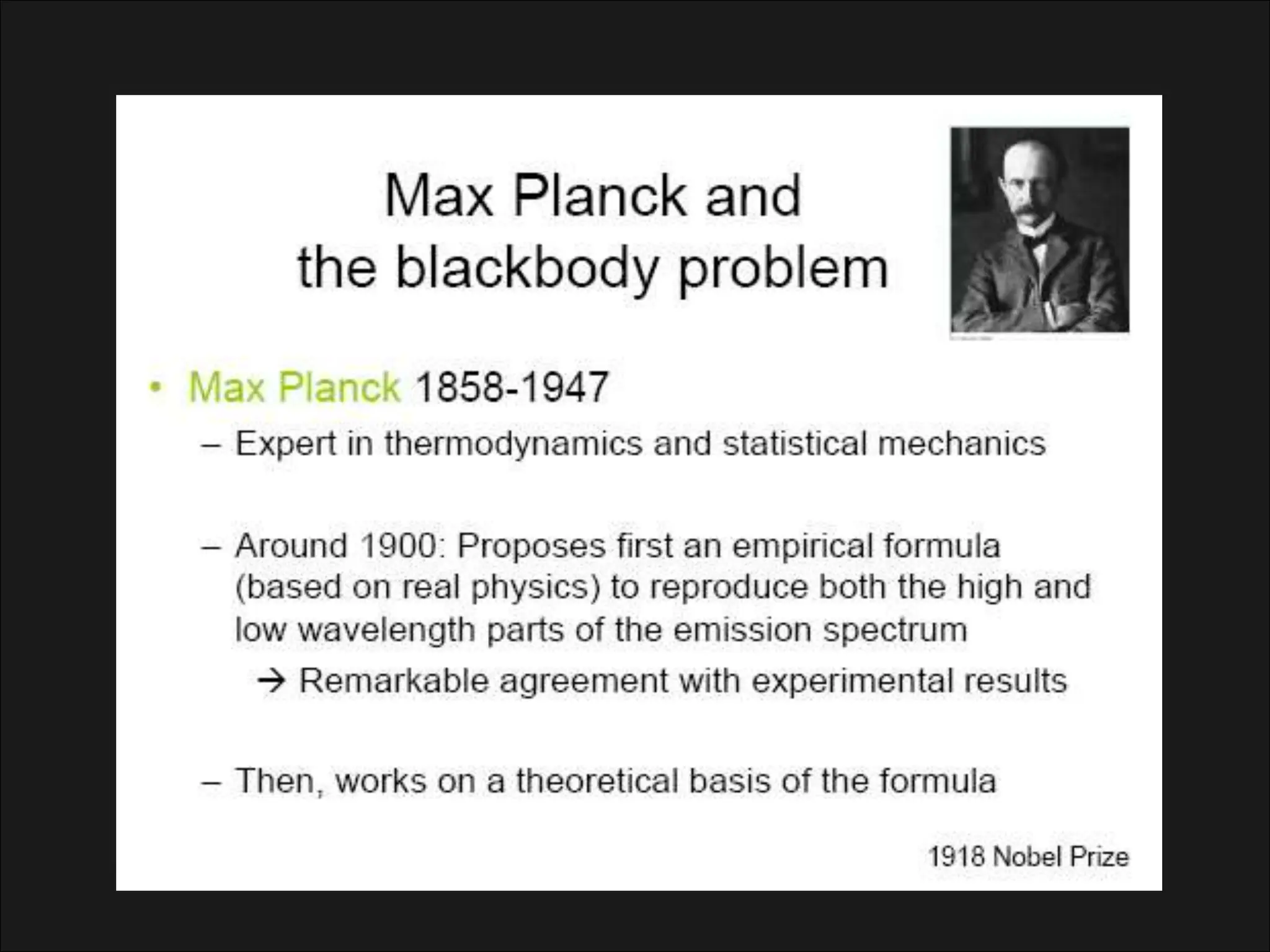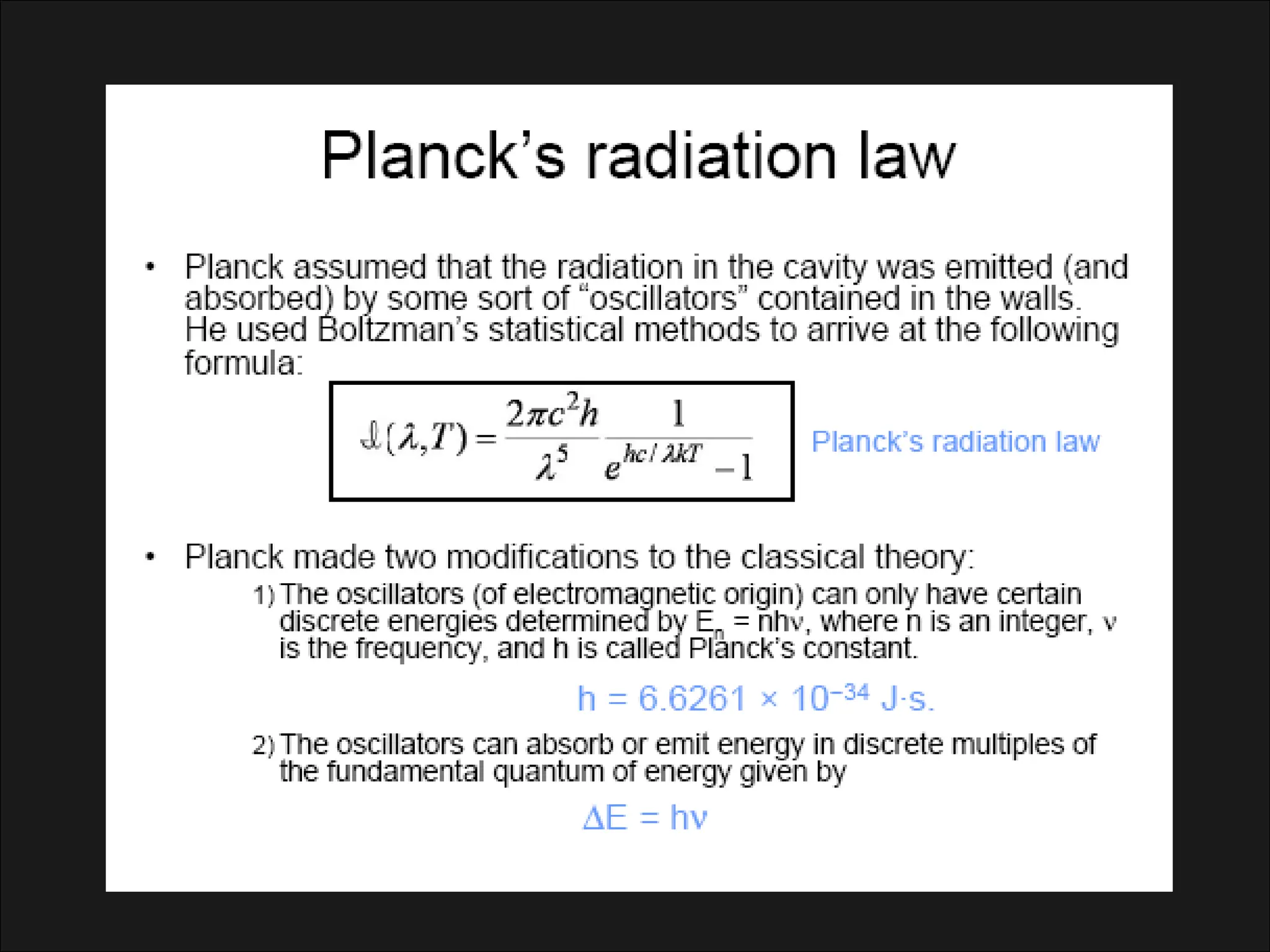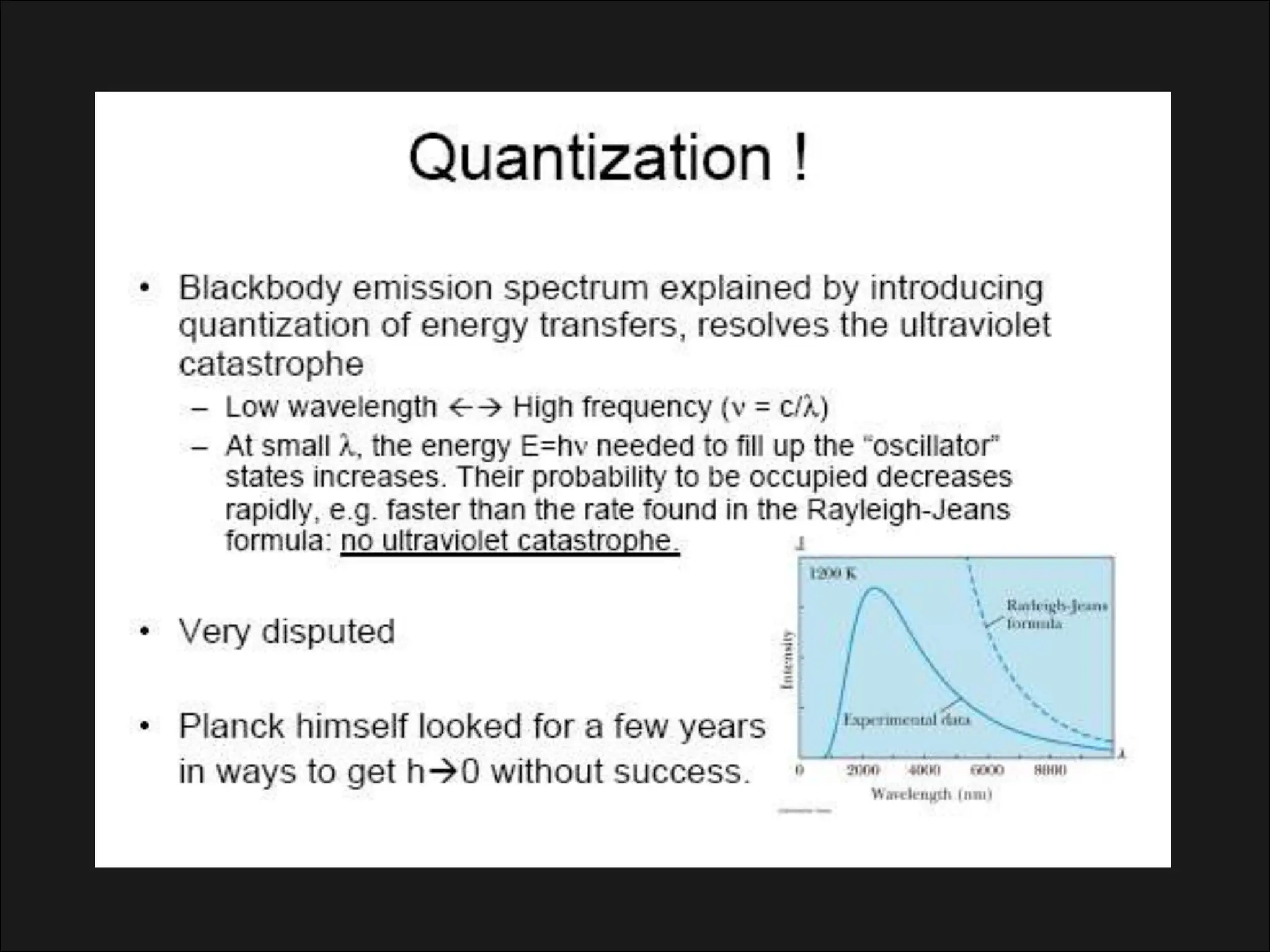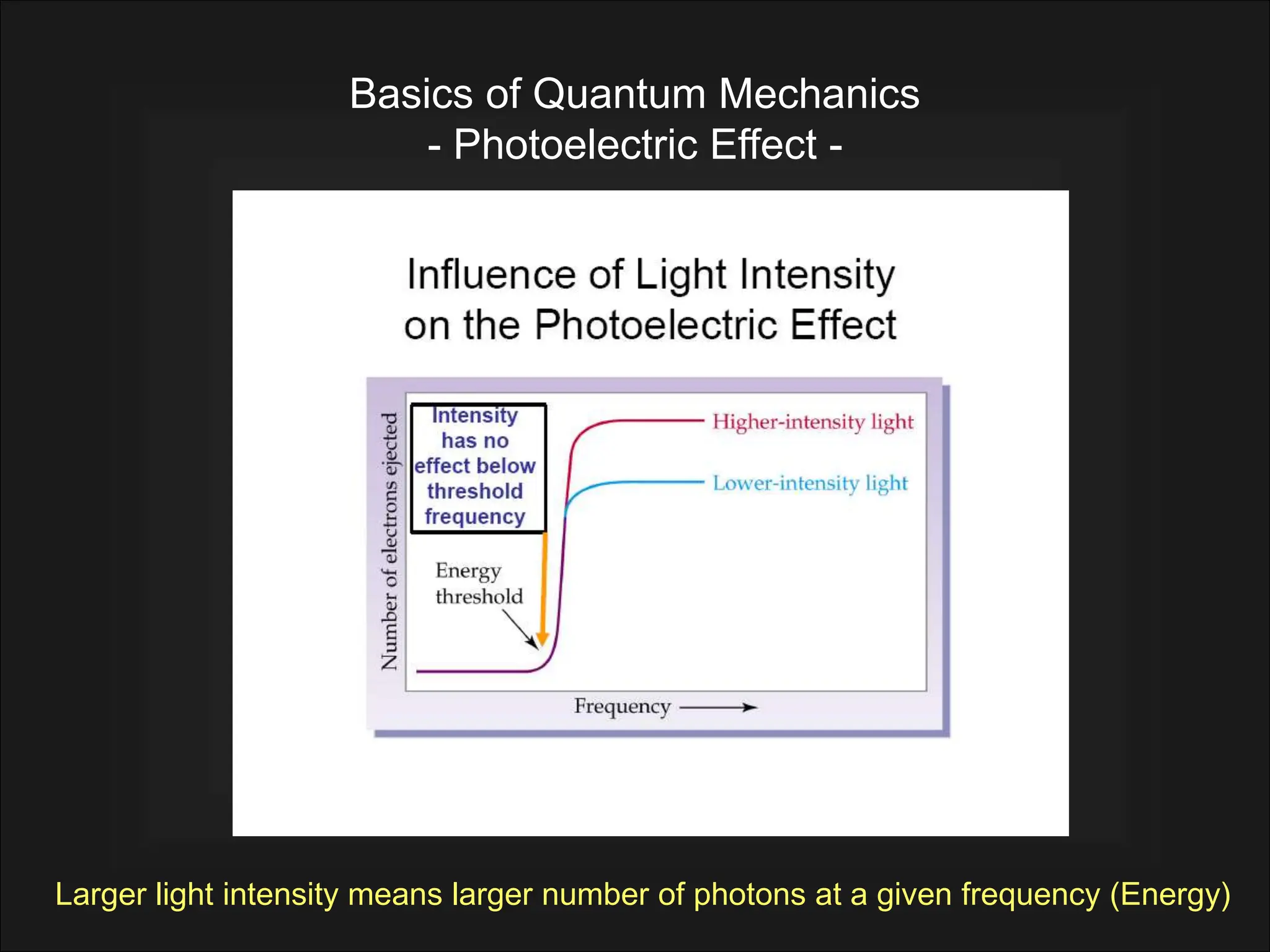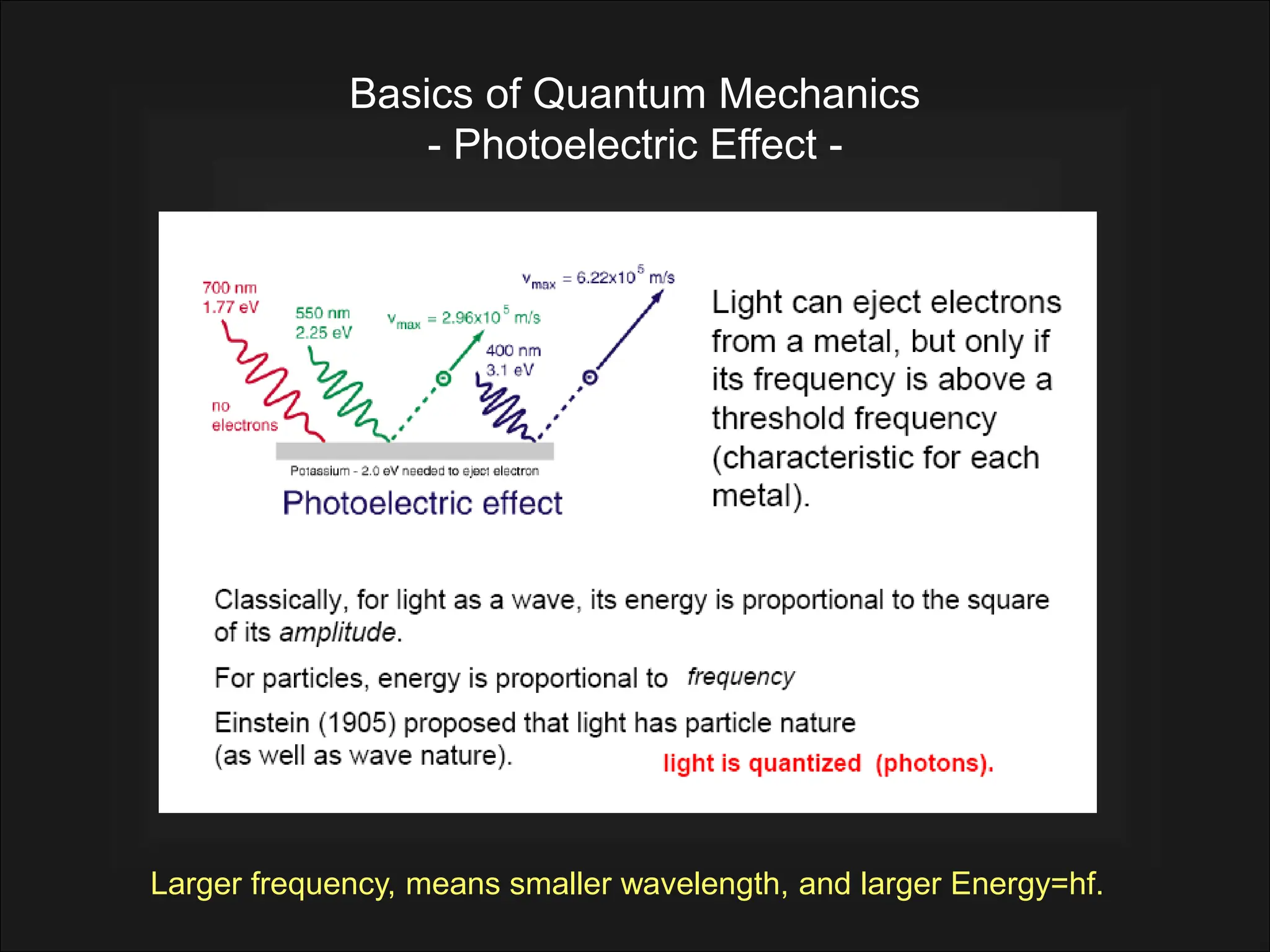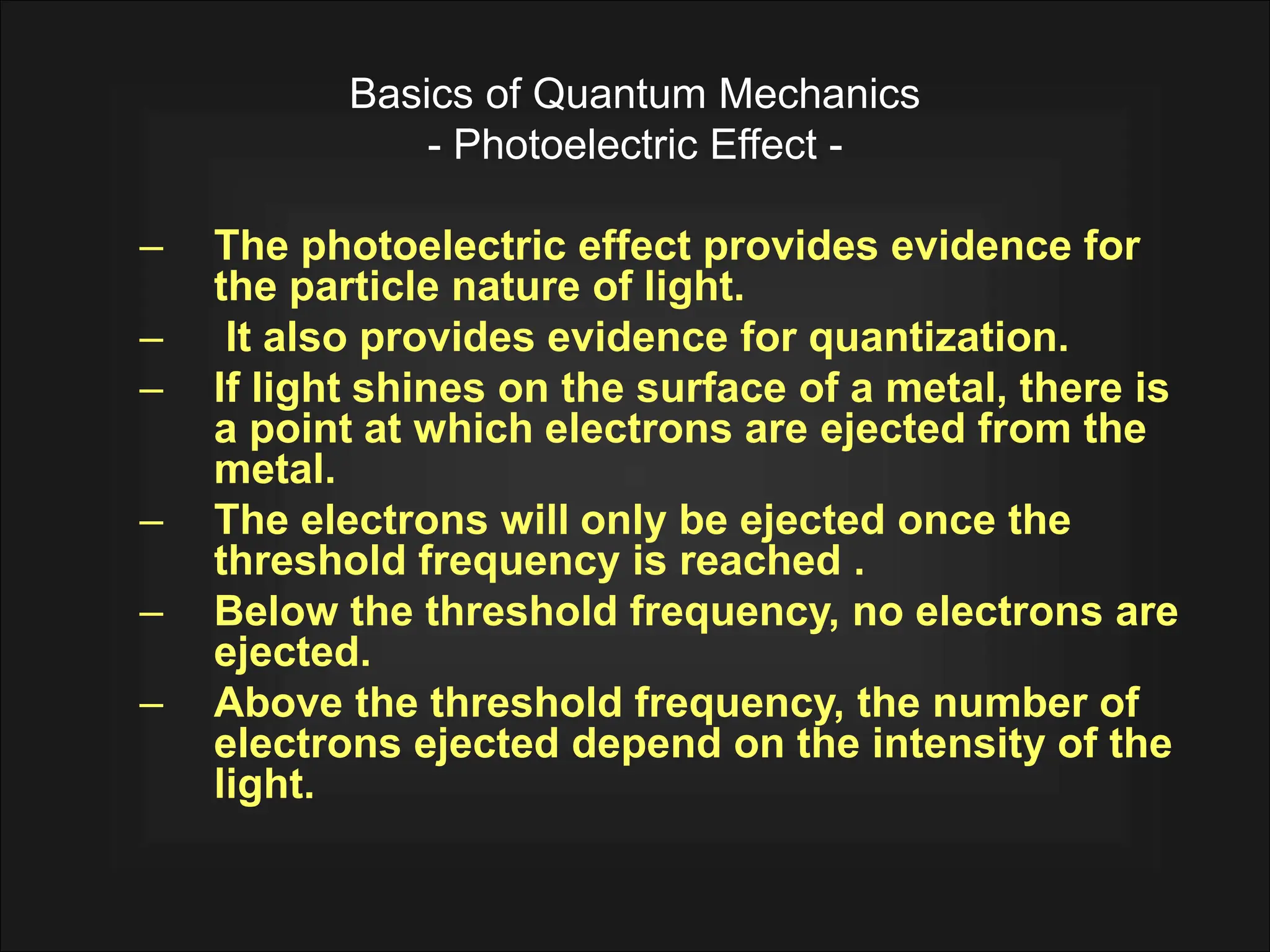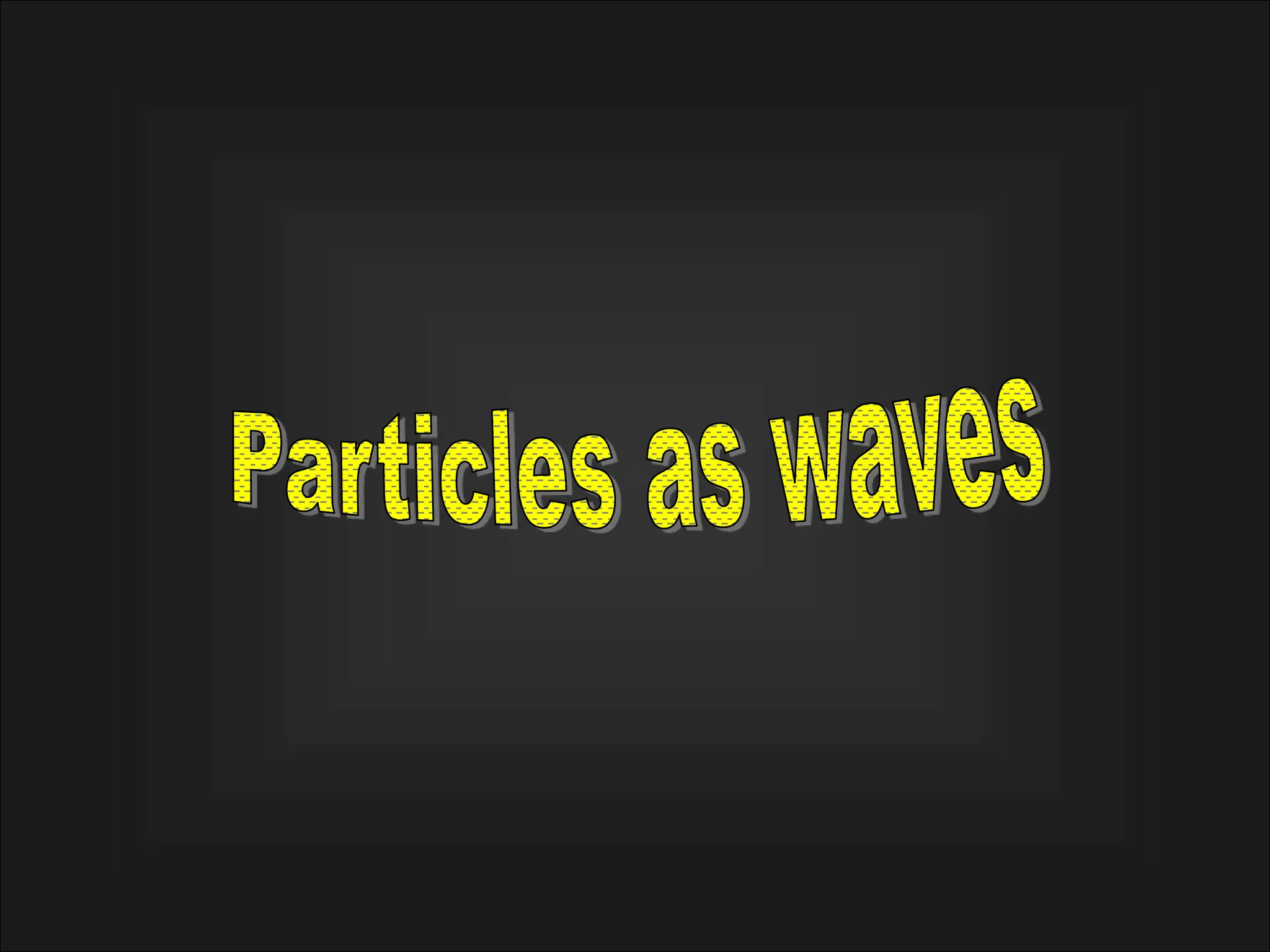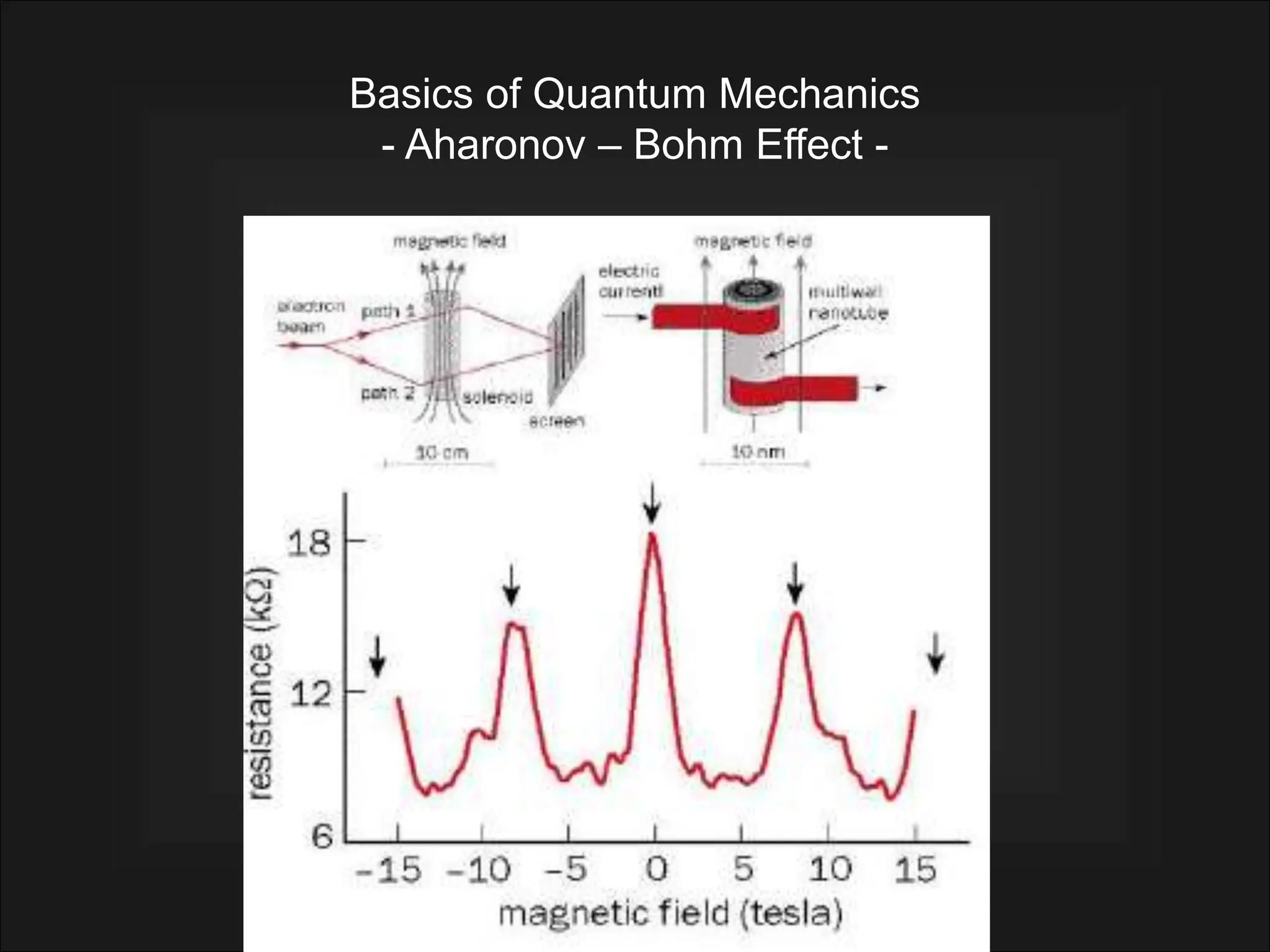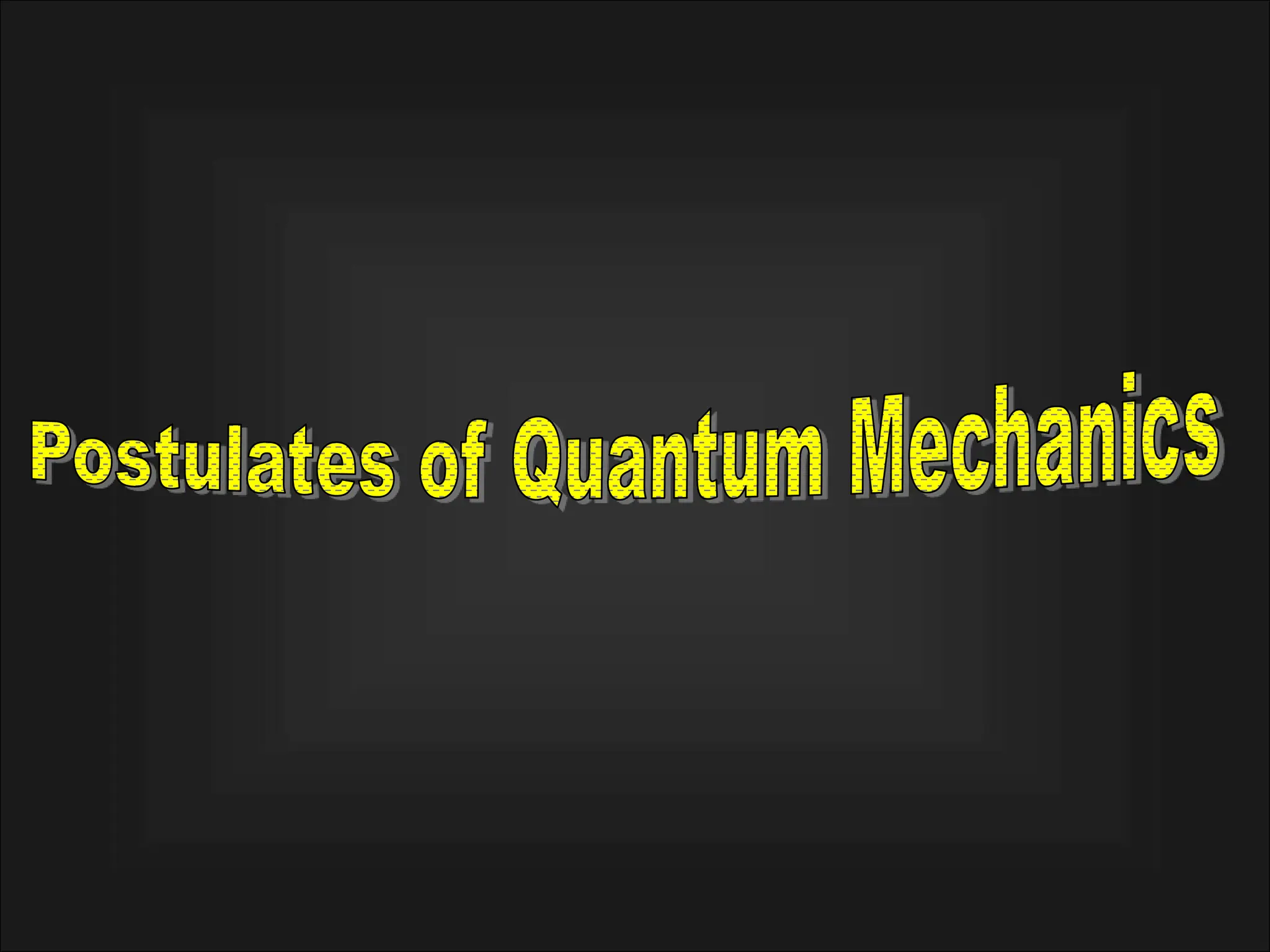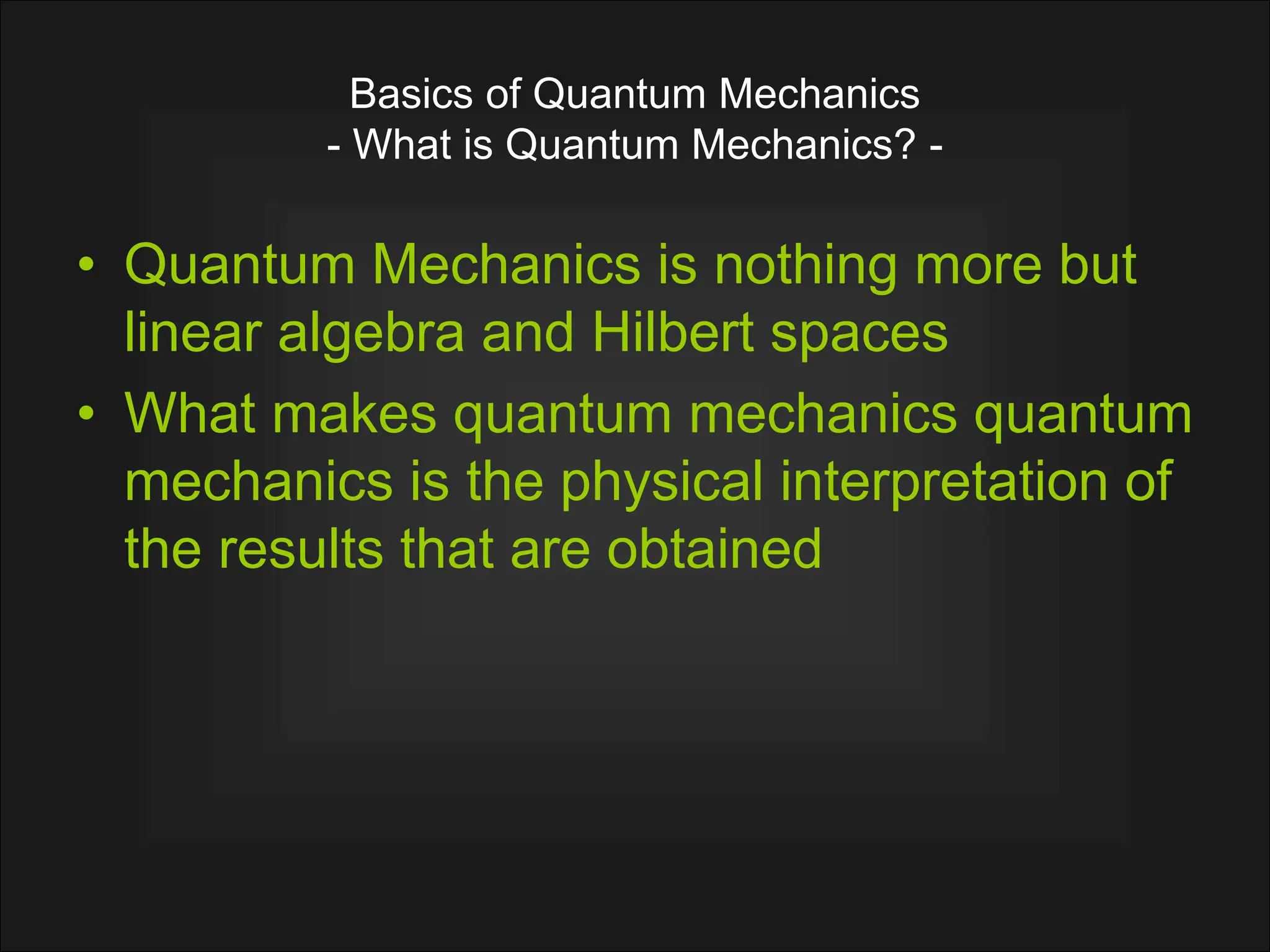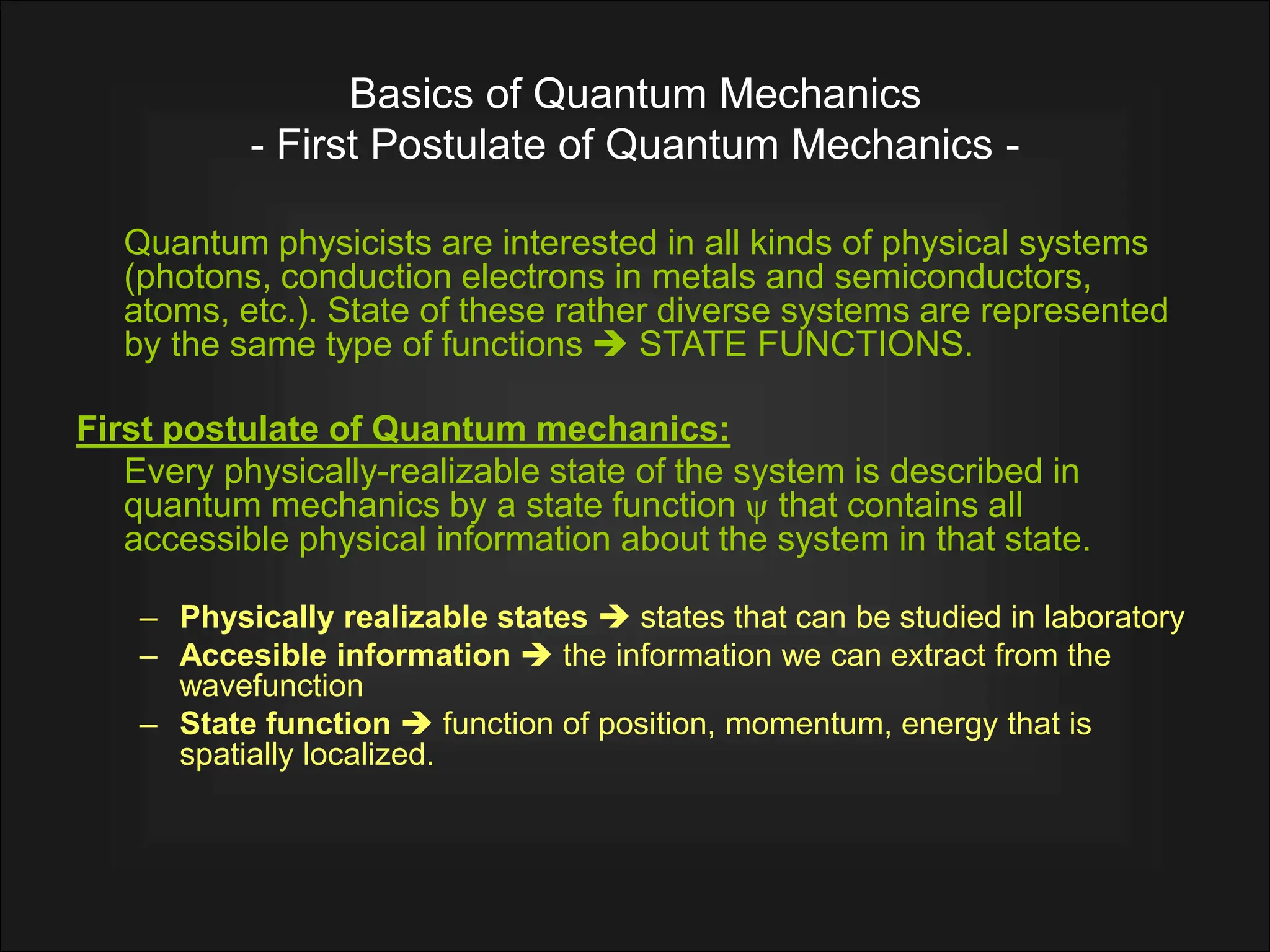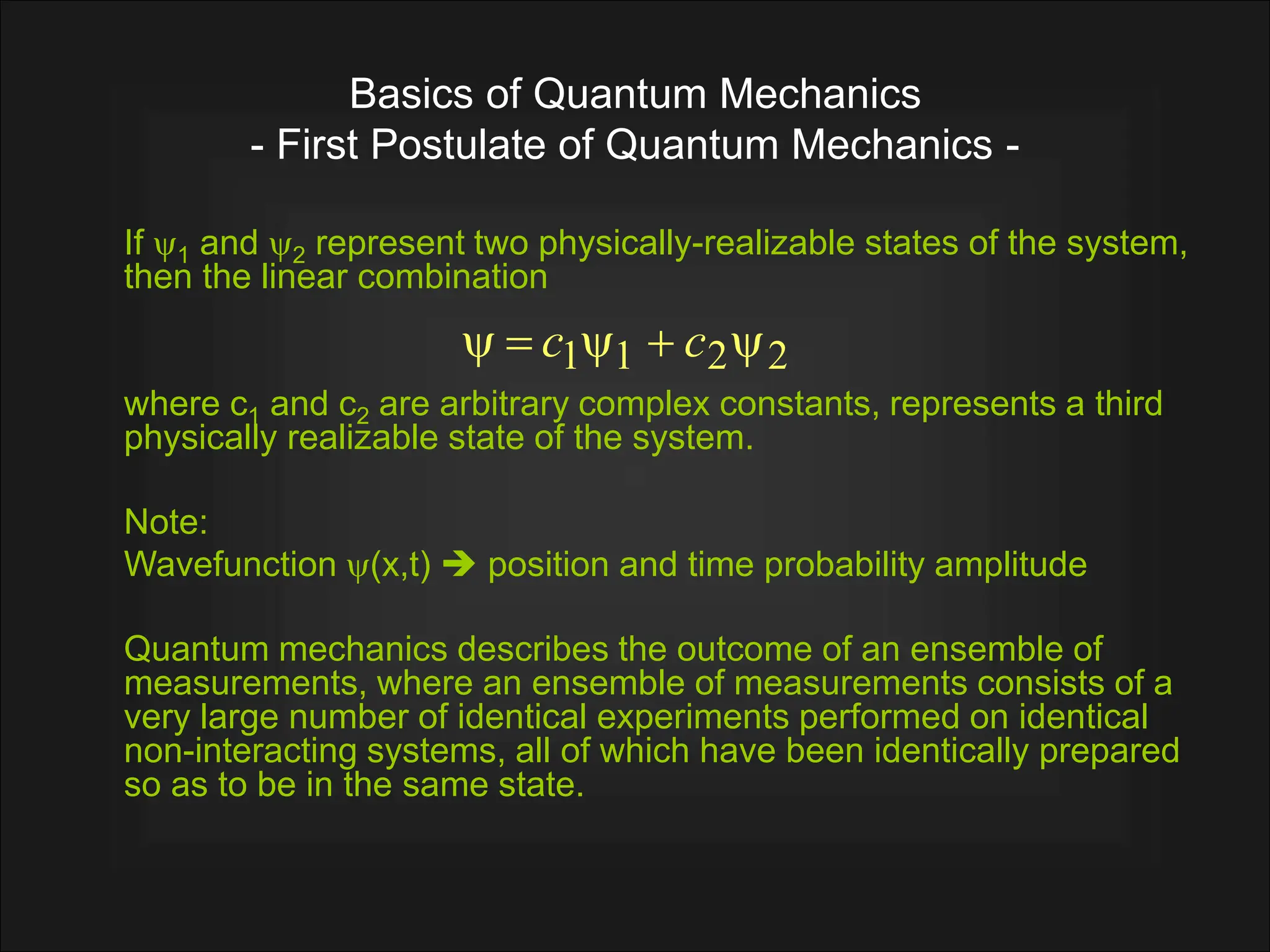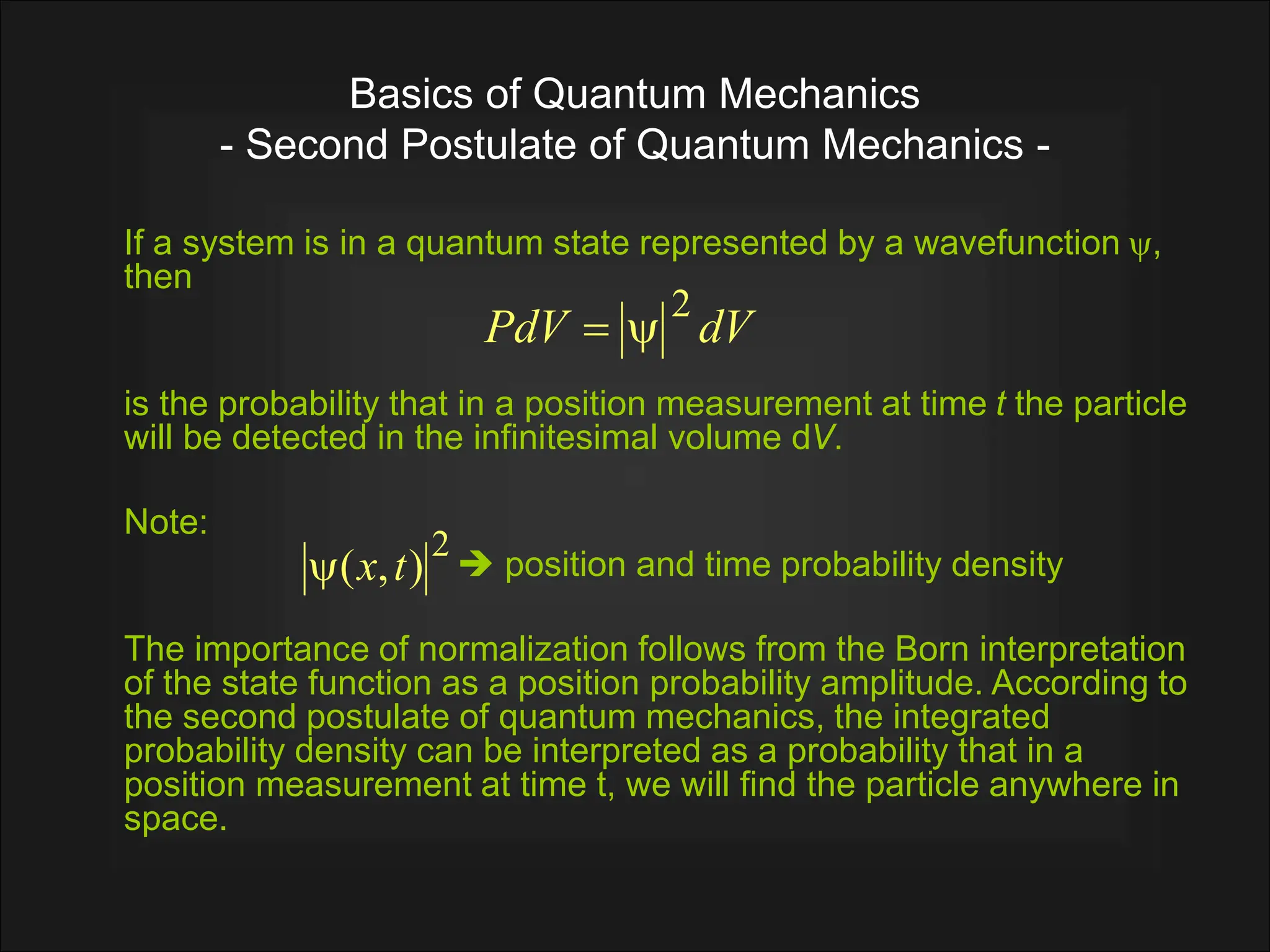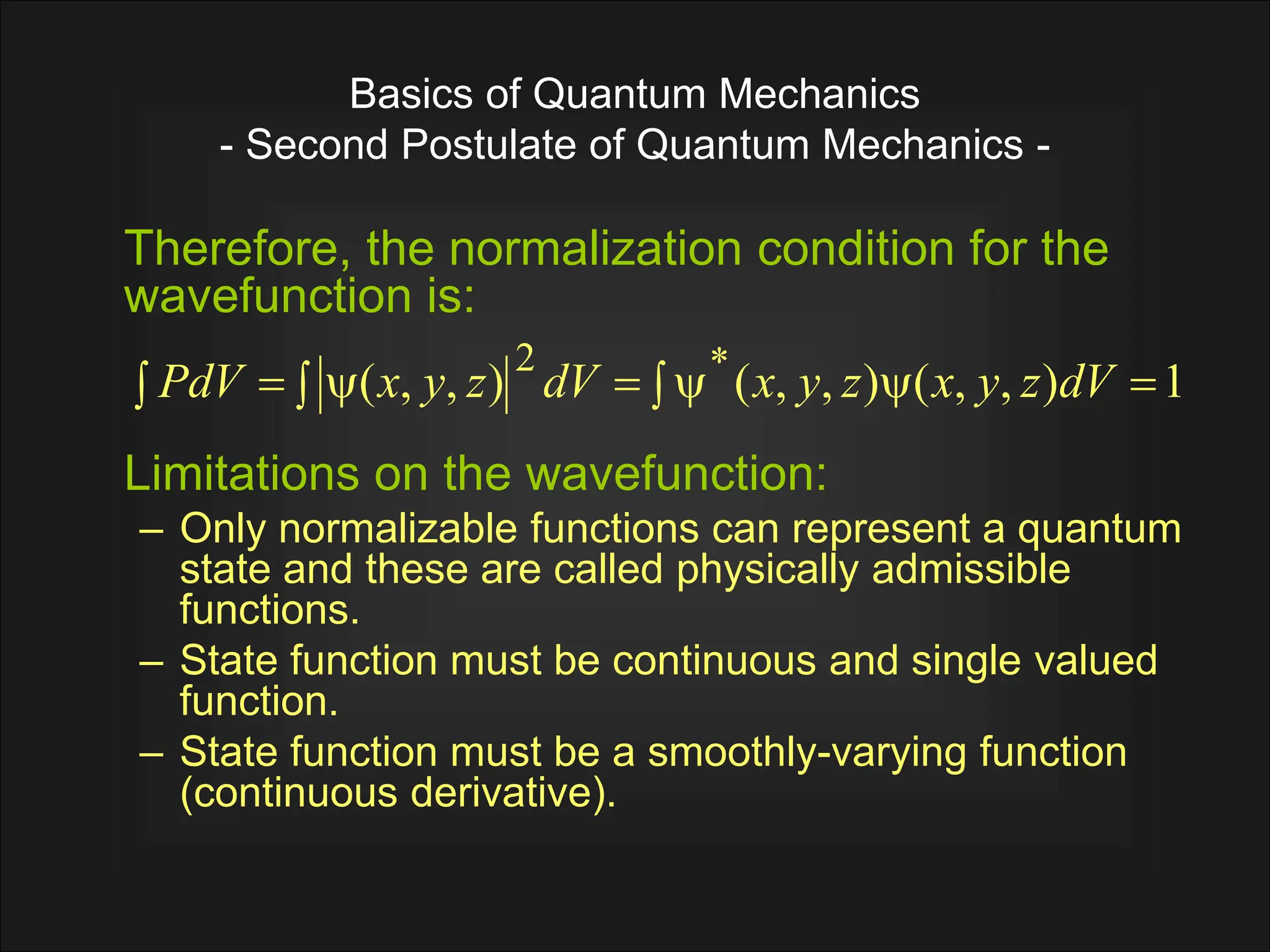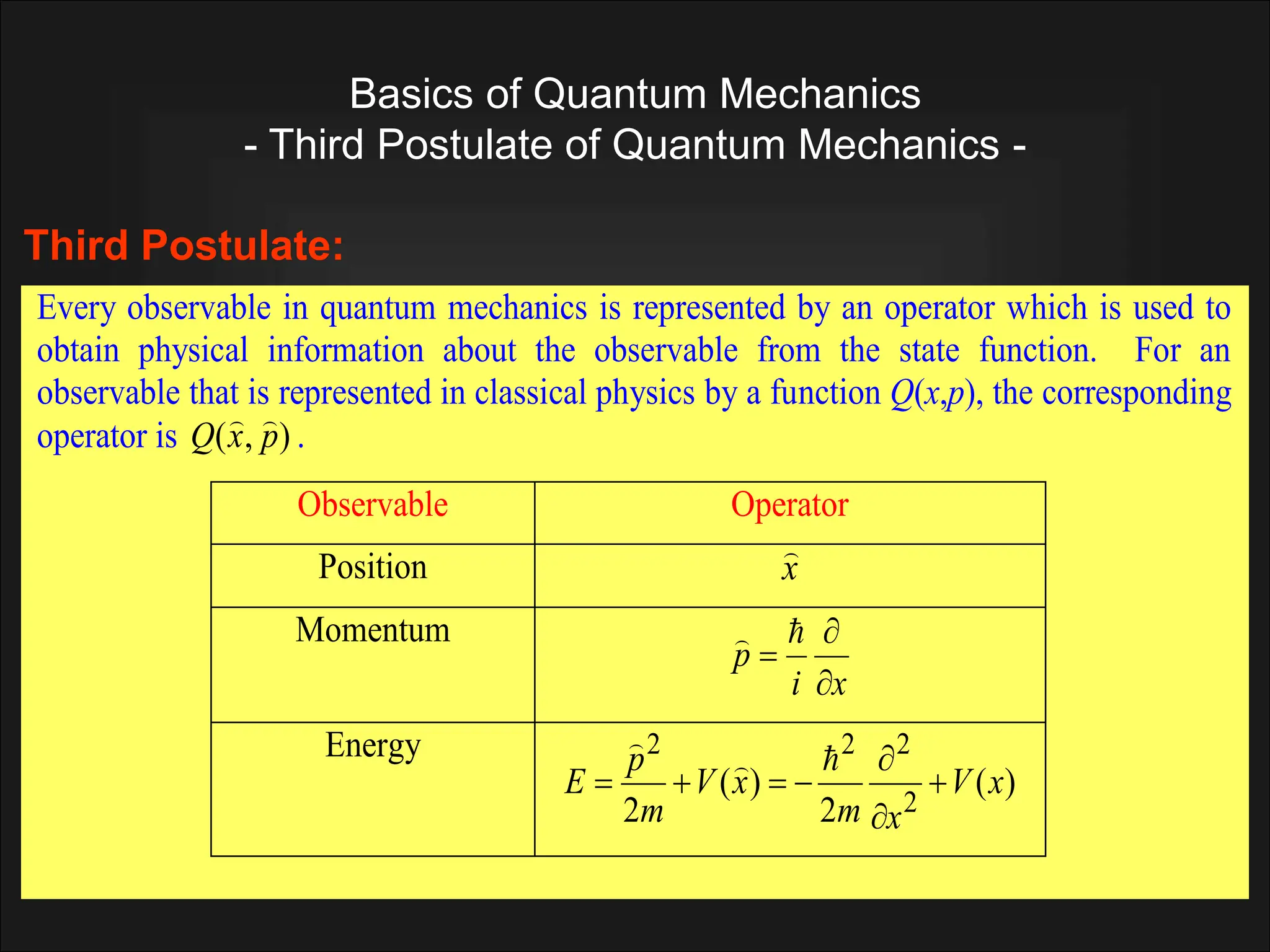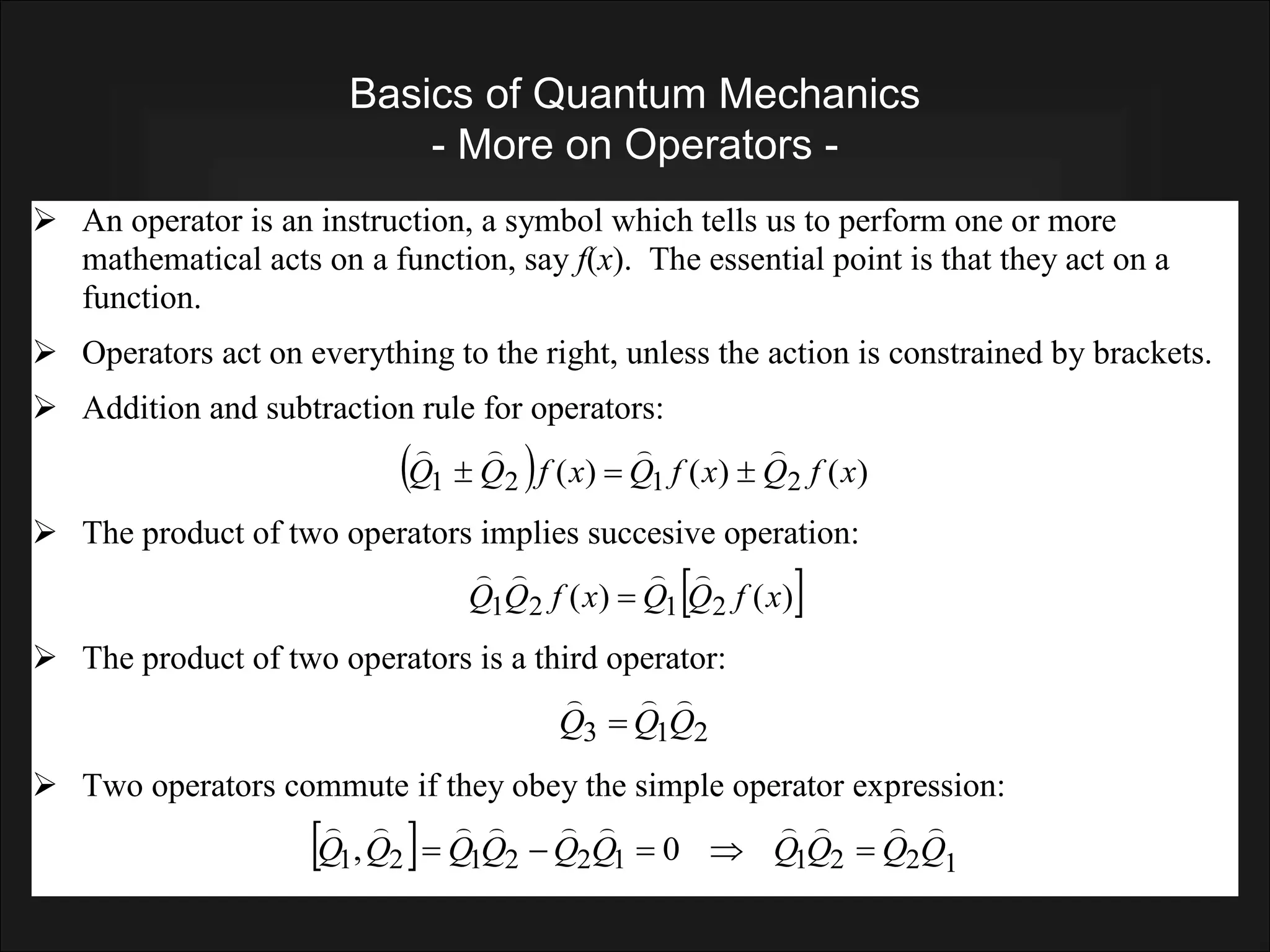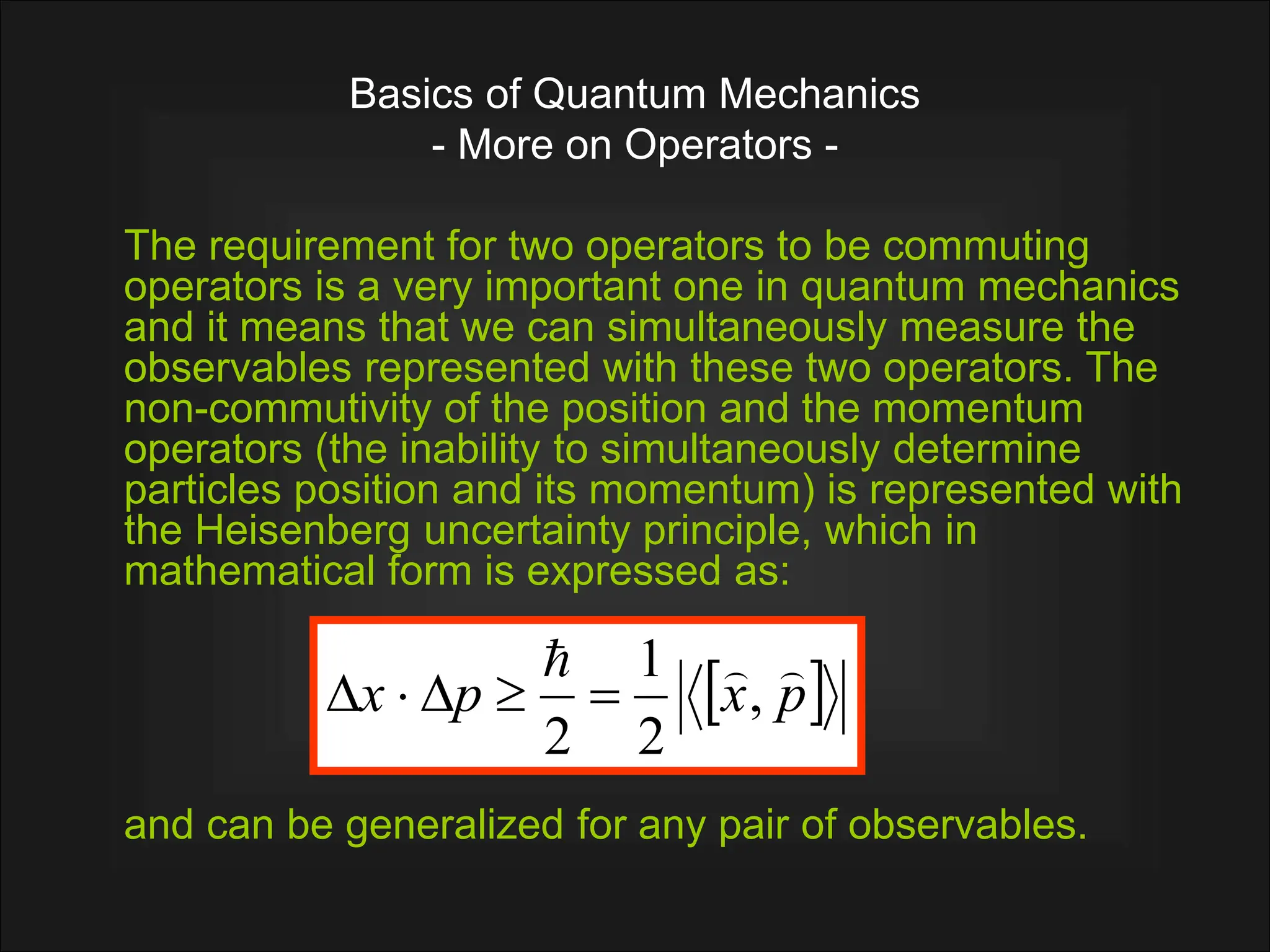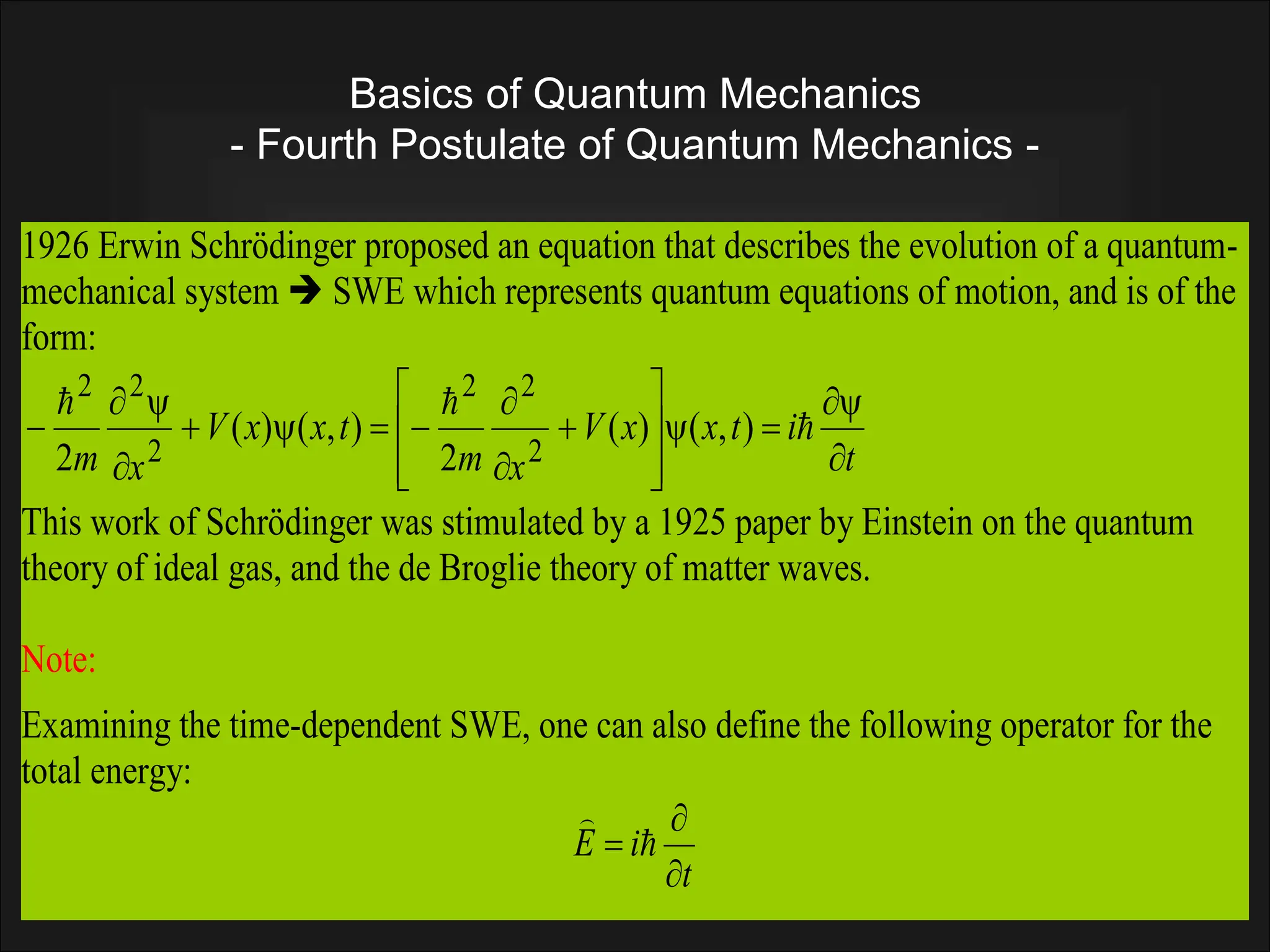The document provides an overview of the basics of quantum mechanics. It discusses key differences between classical and quantum mechanics, including that quantum particles can act as both particles and waves due to wave-particle duality. The four main postulates of quantum mechanics are outlined: 1) every system is described by a state function, 2) the state function defines probability distributions, 3) observables are represented by operators, and 4) the time development of state functions is governed by the Schrodinger equation. Key quantum phenomena like the photoelectric effect and Heisenberg uncertainty principle are also summarized.
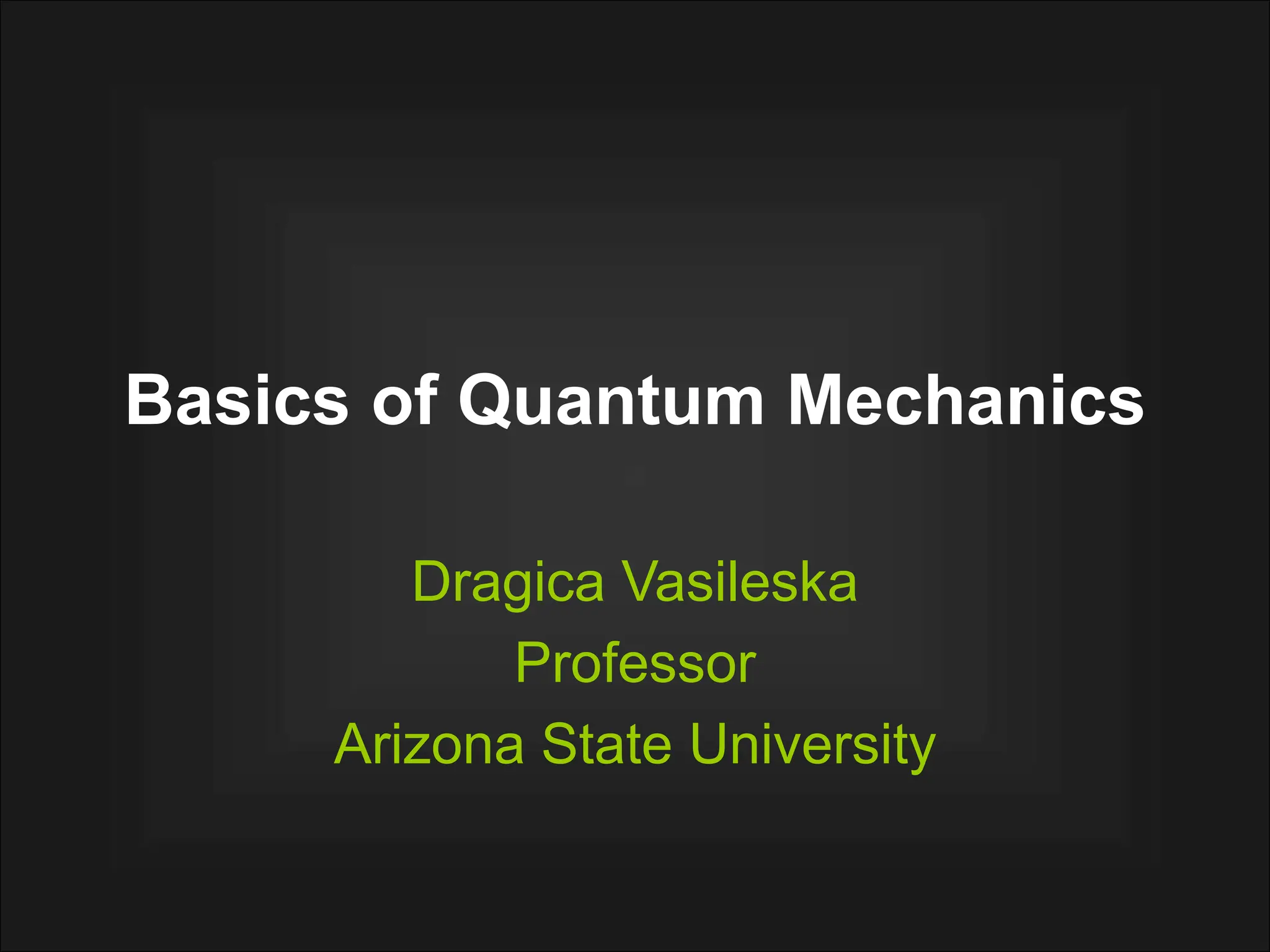
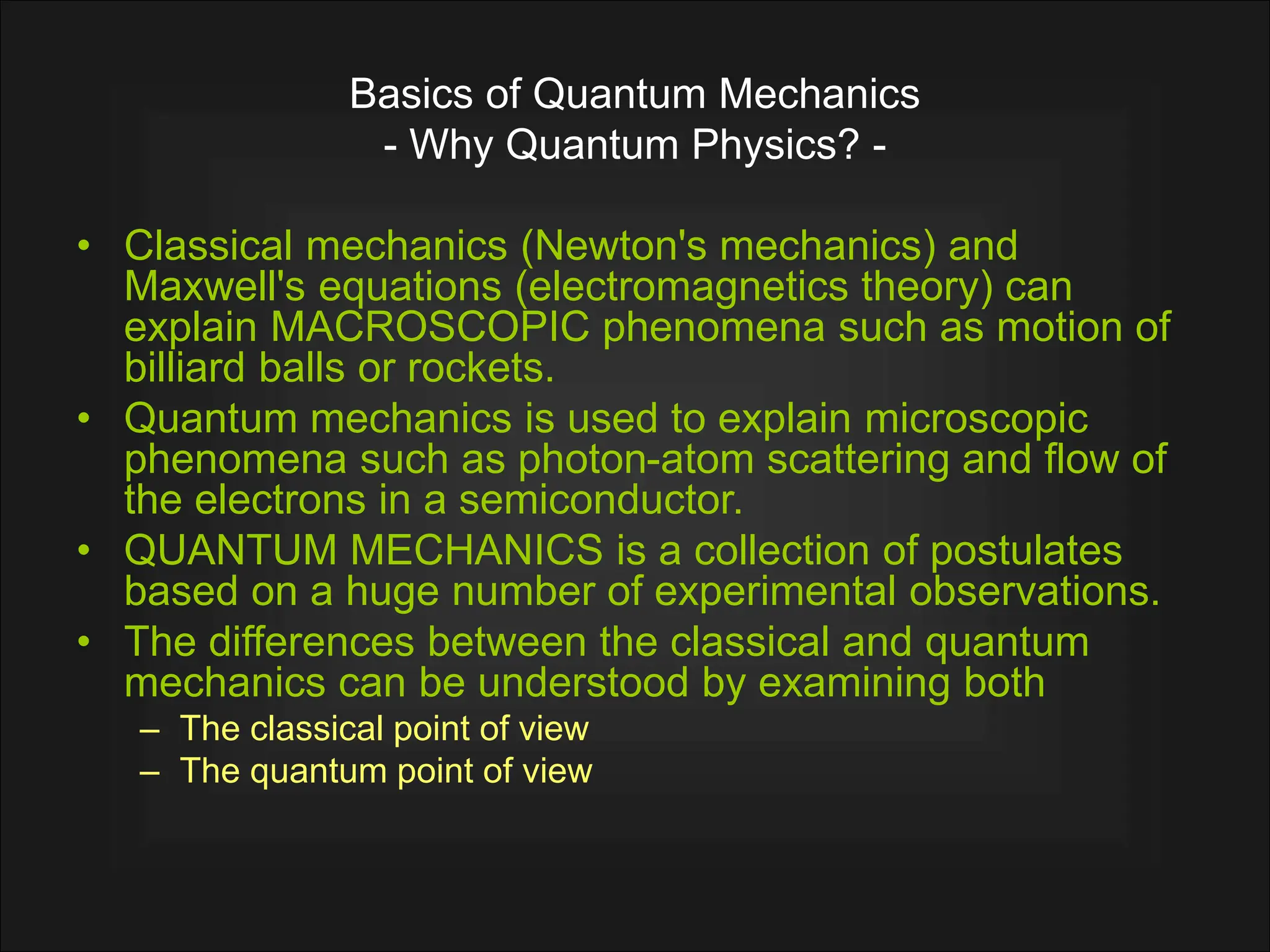
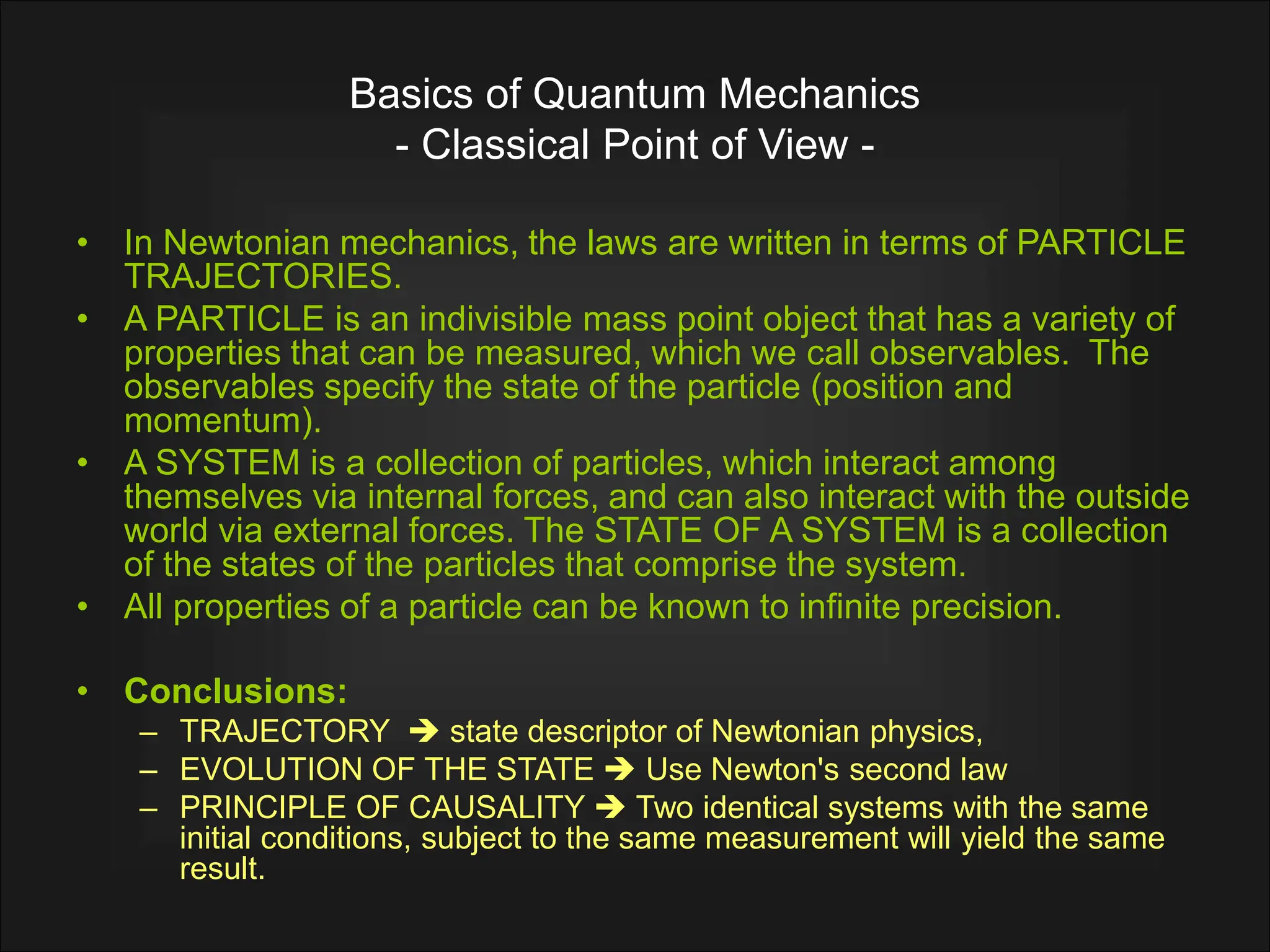
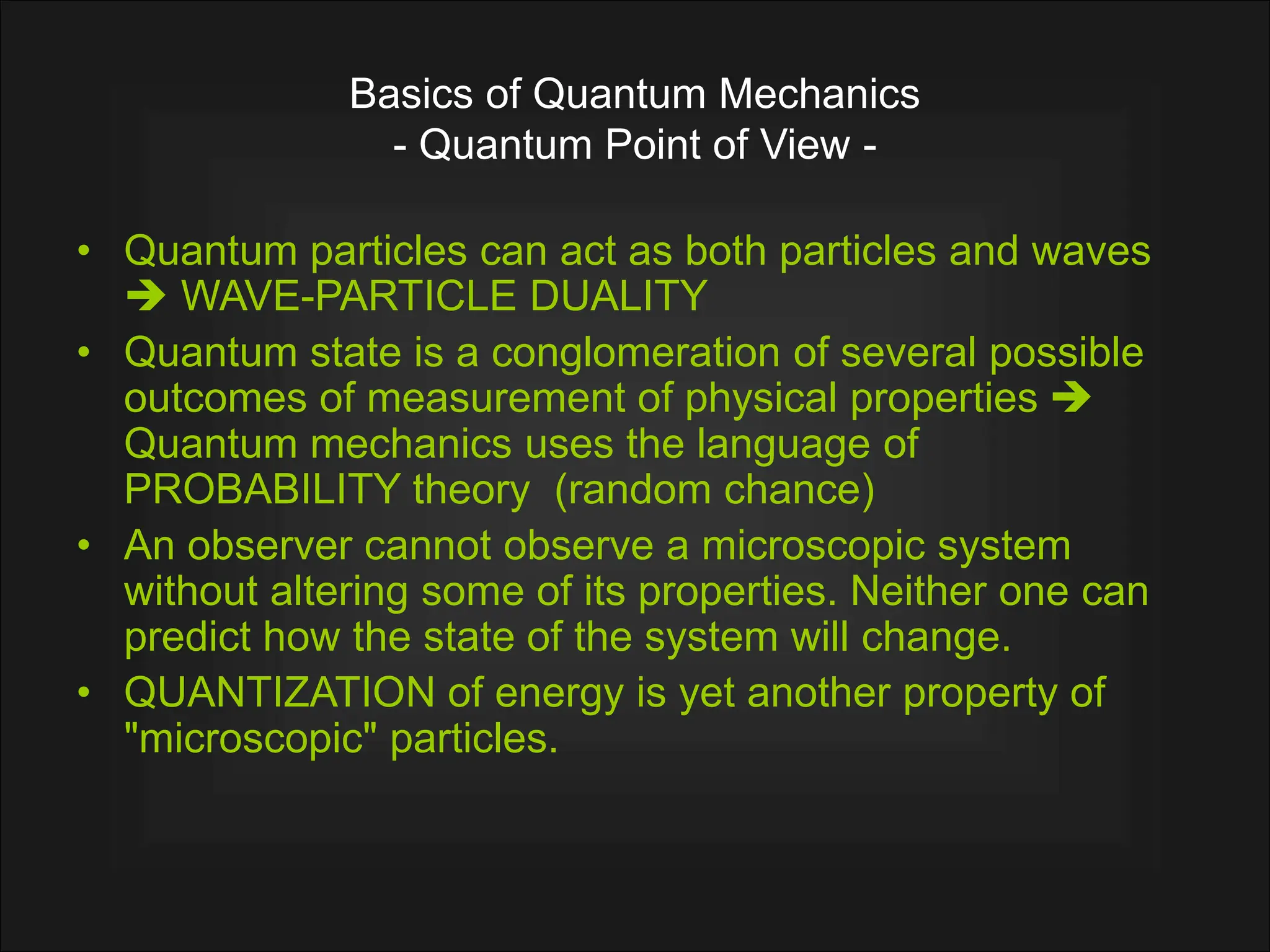
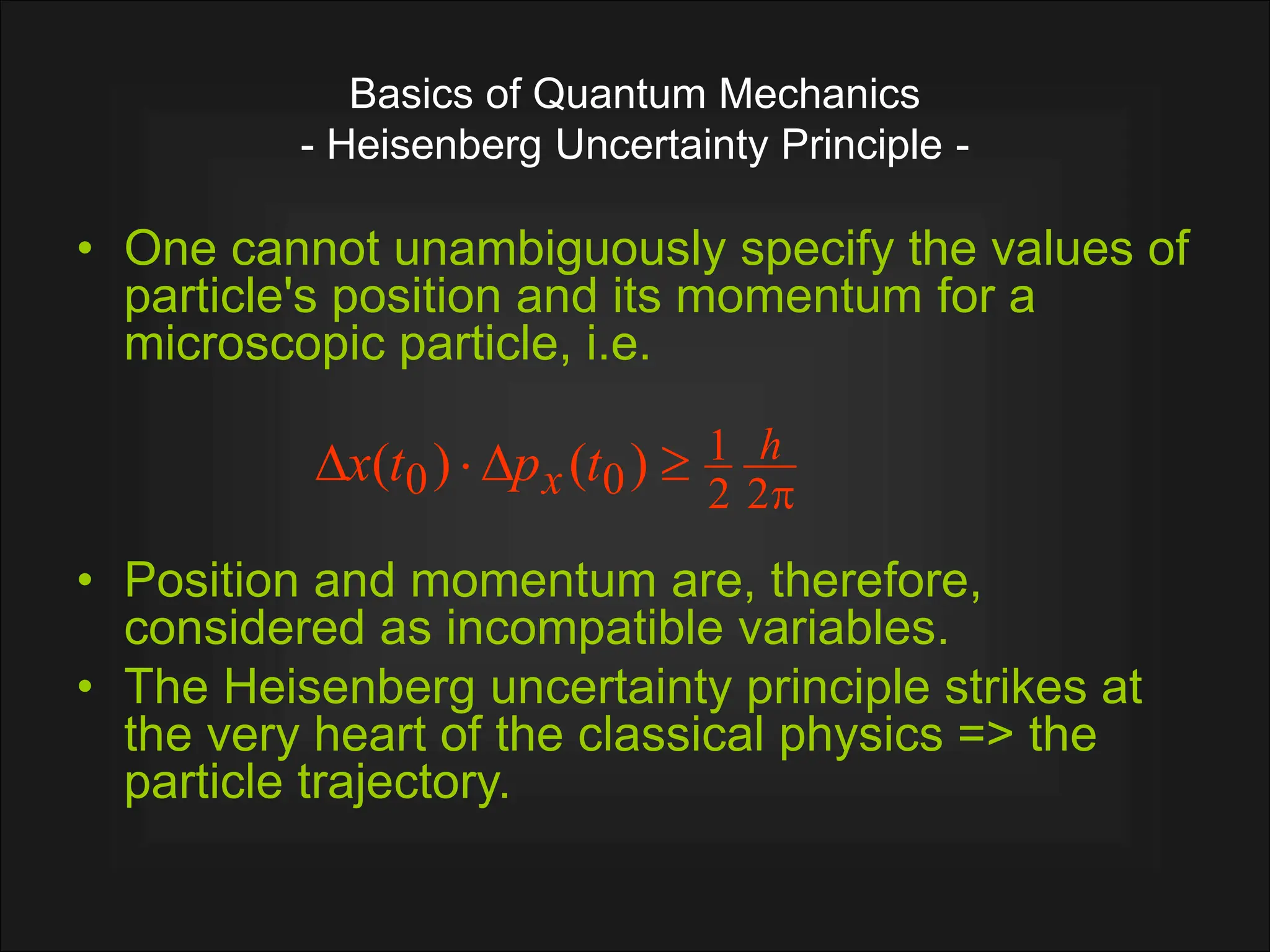
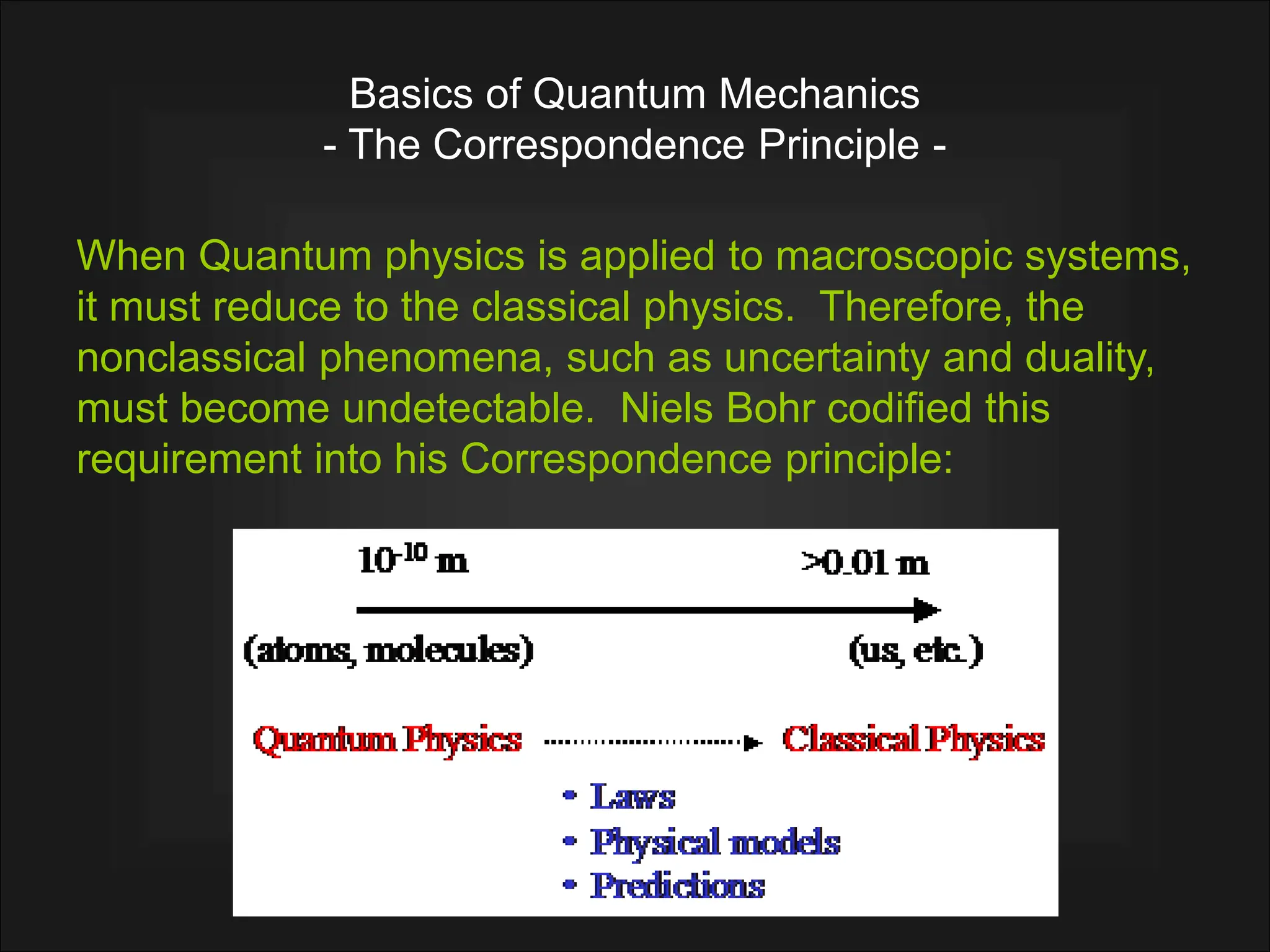
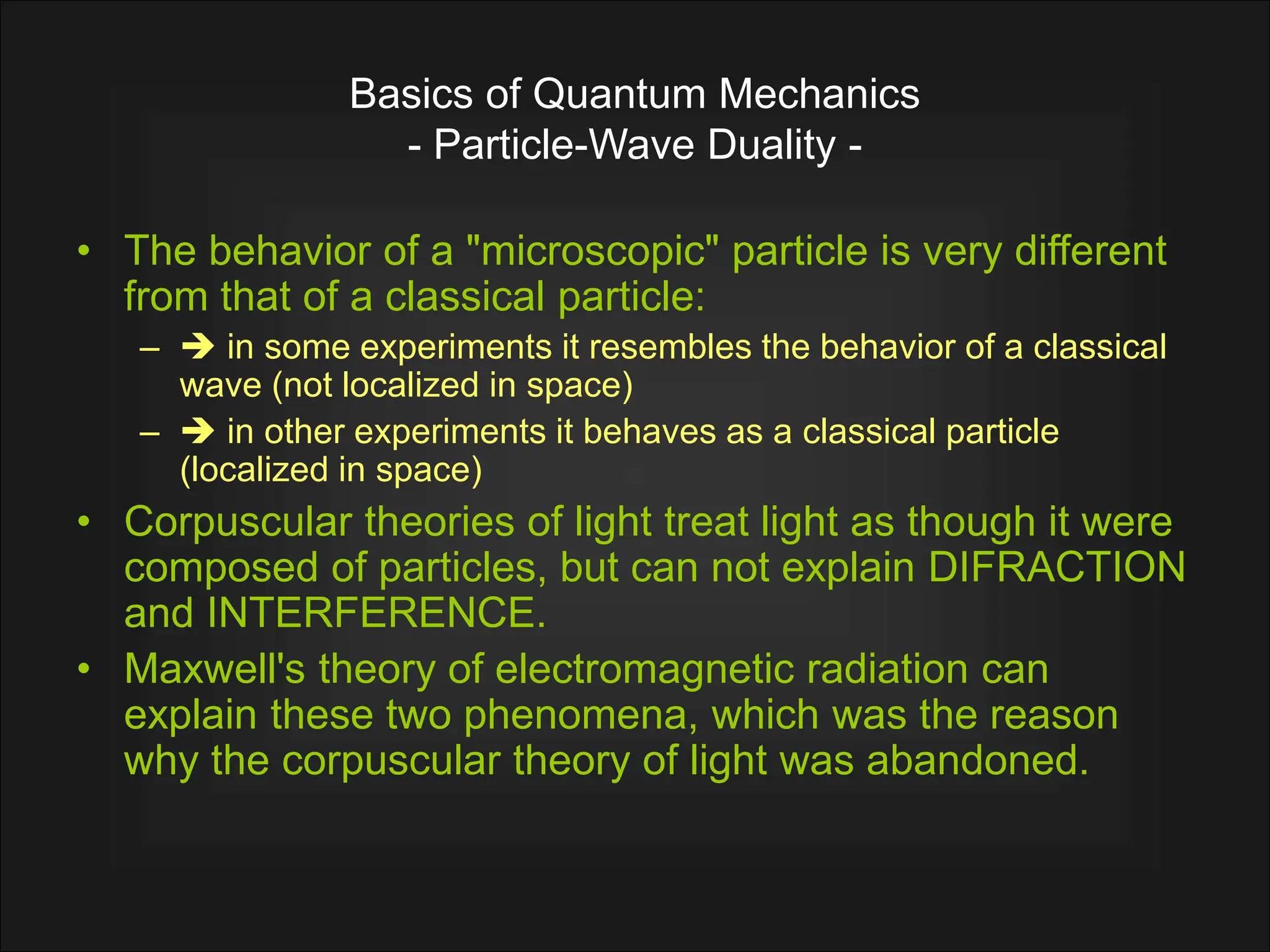
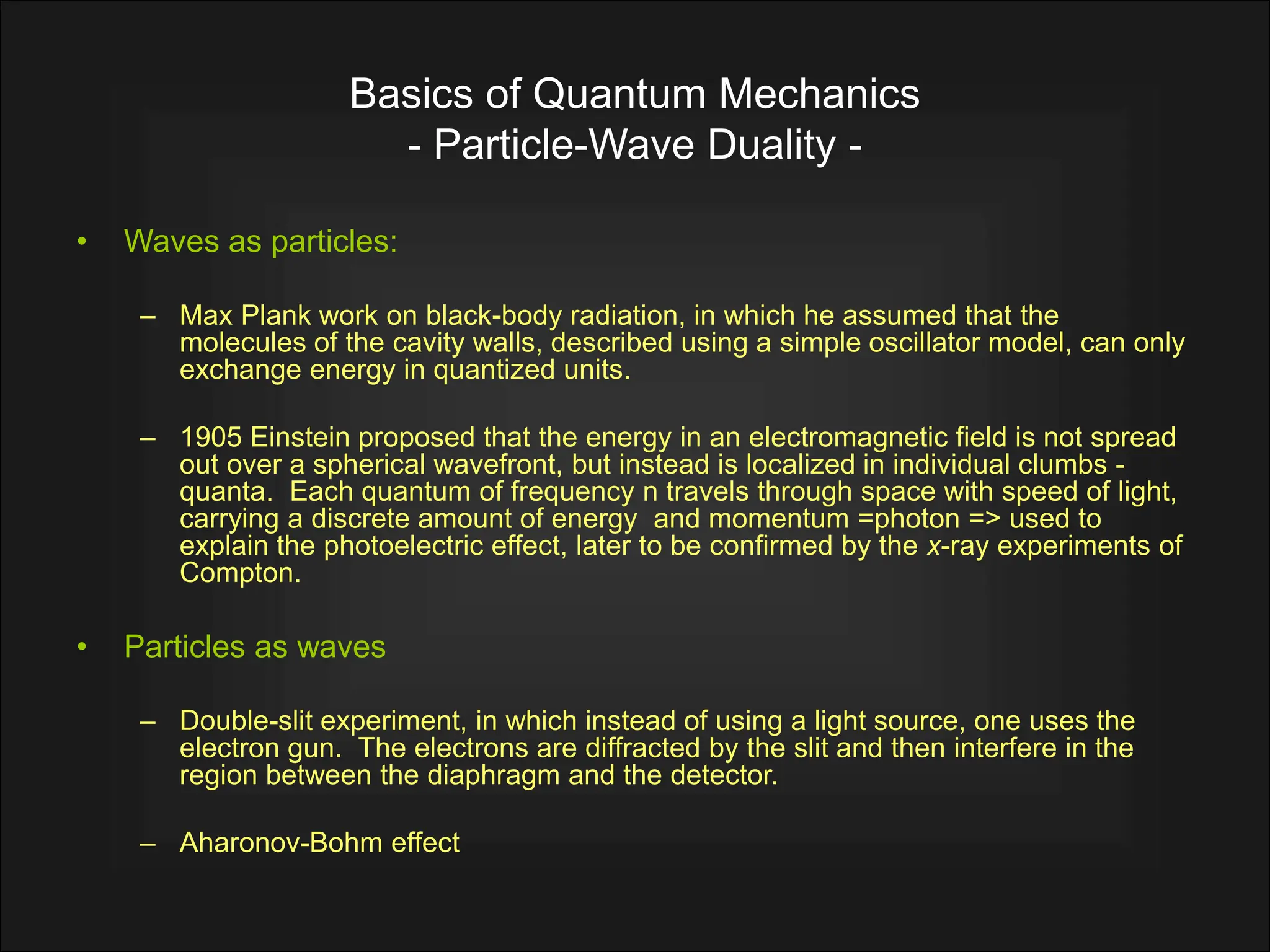
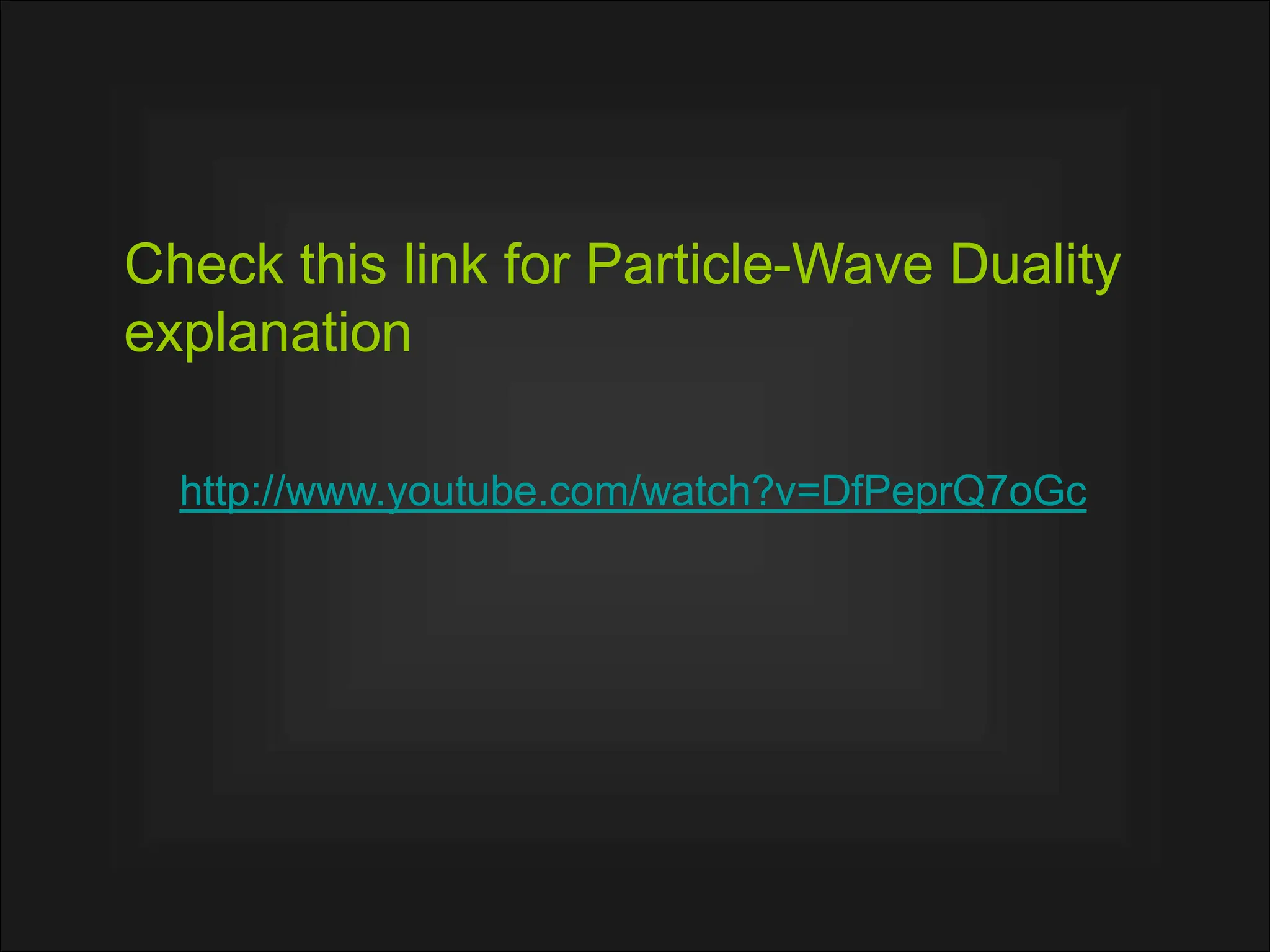
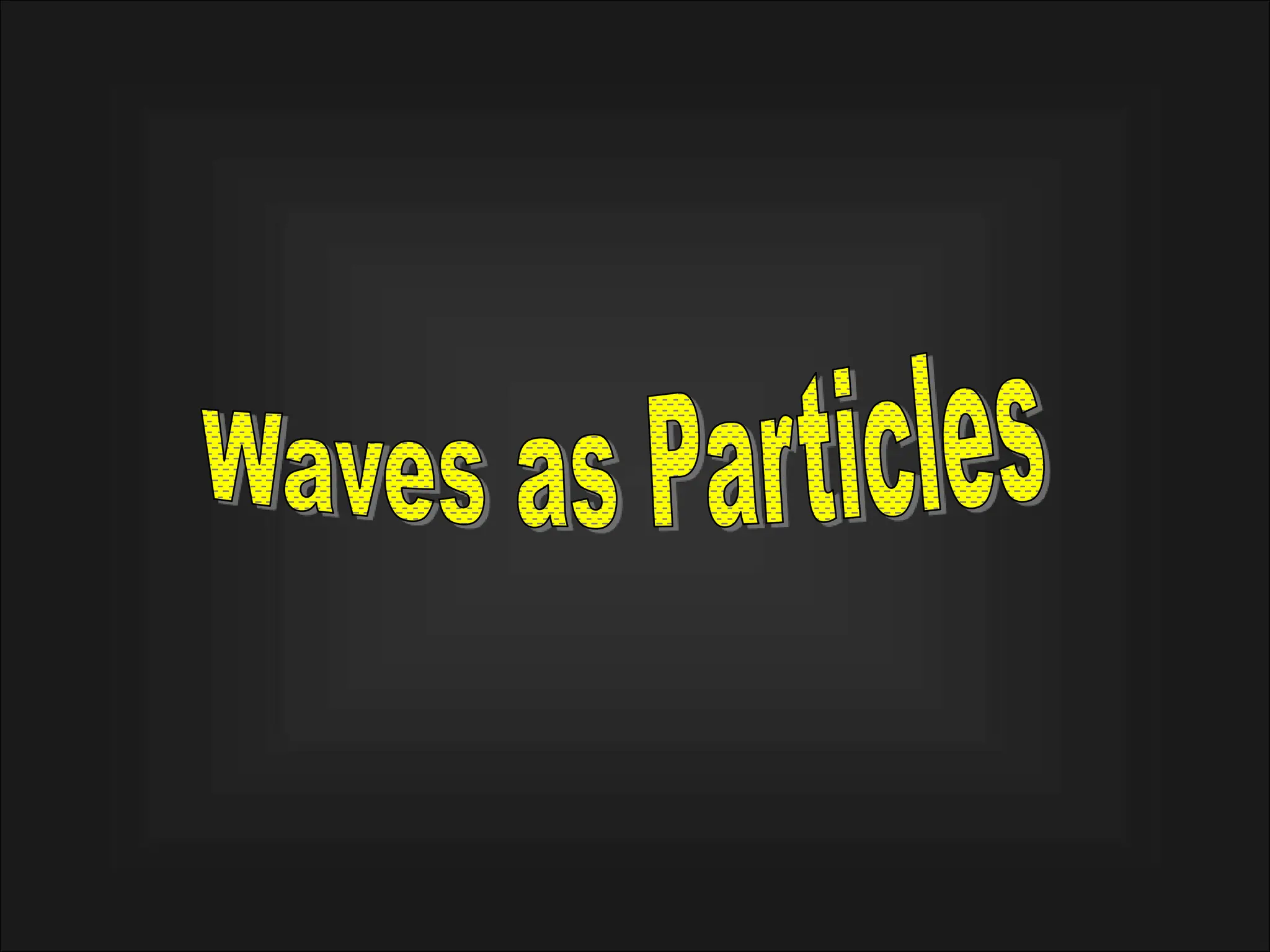
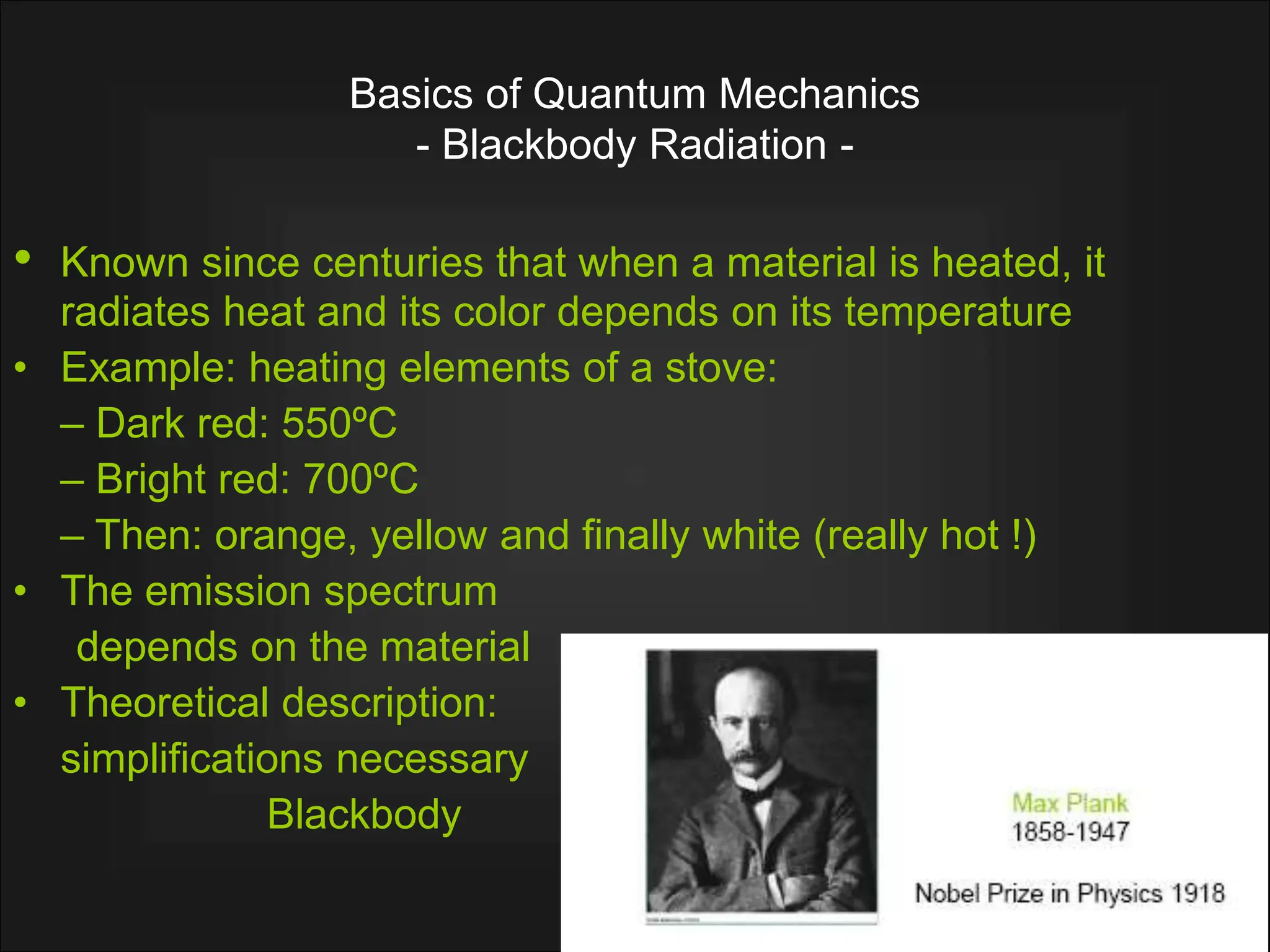
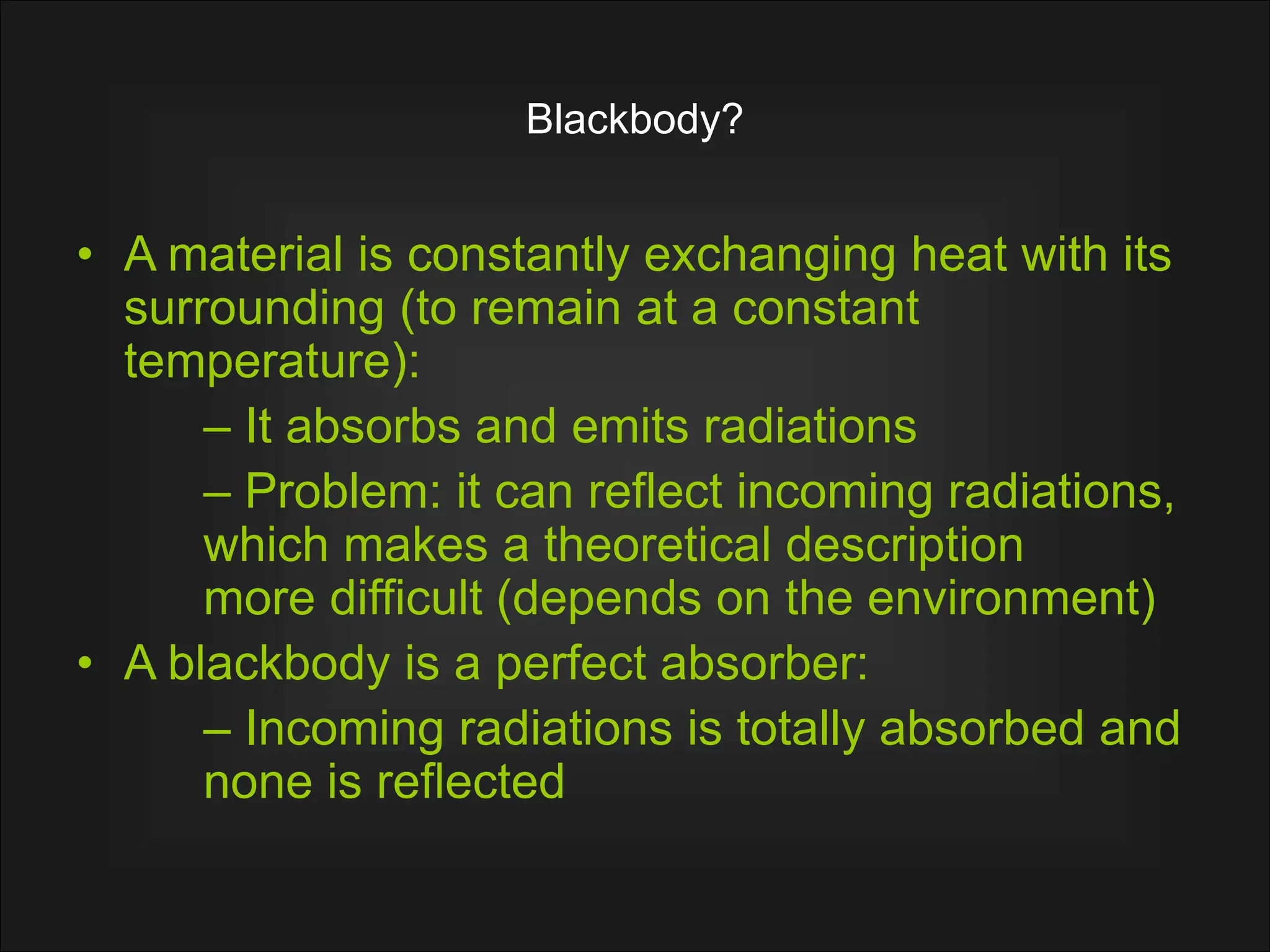
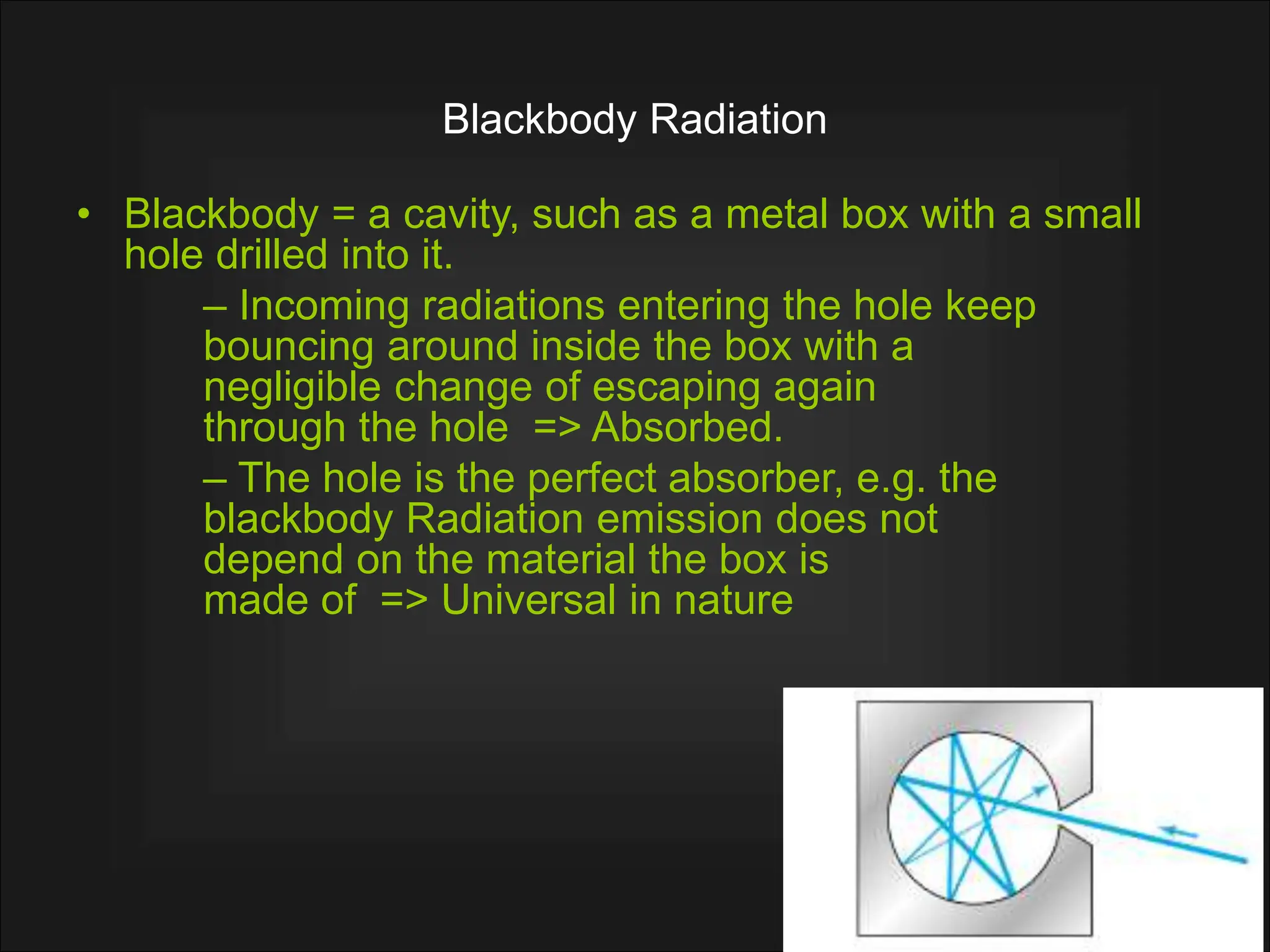
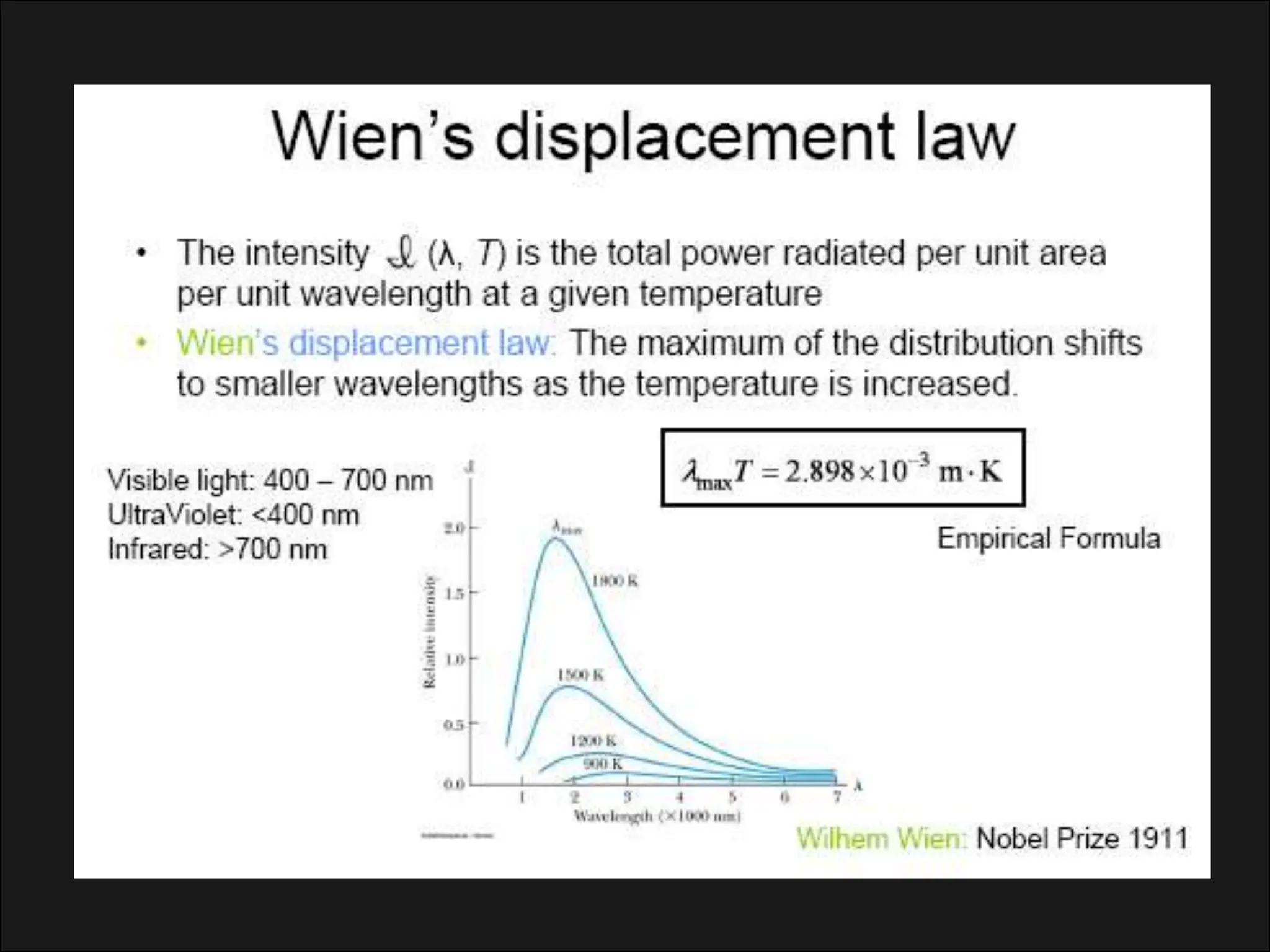
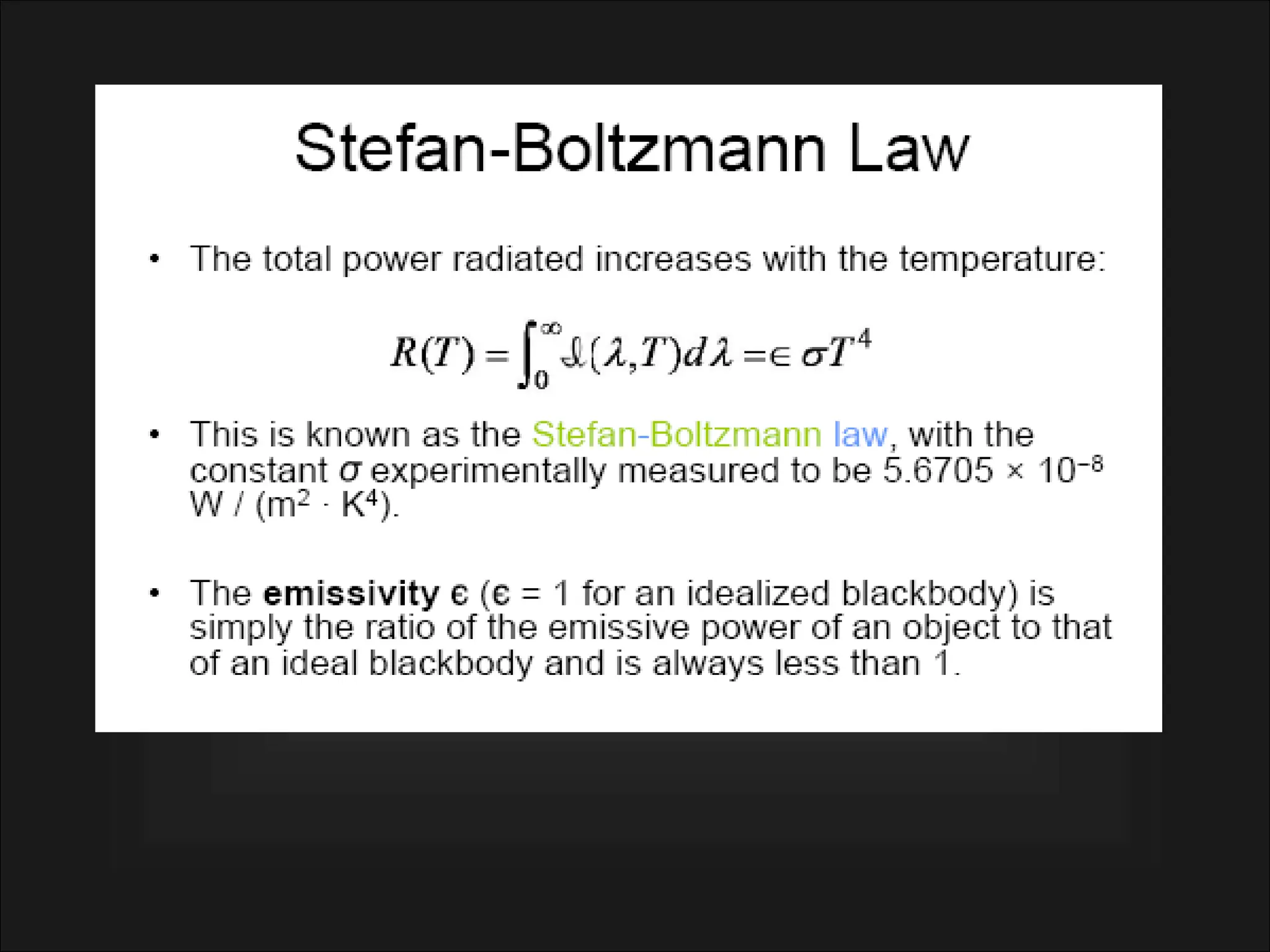
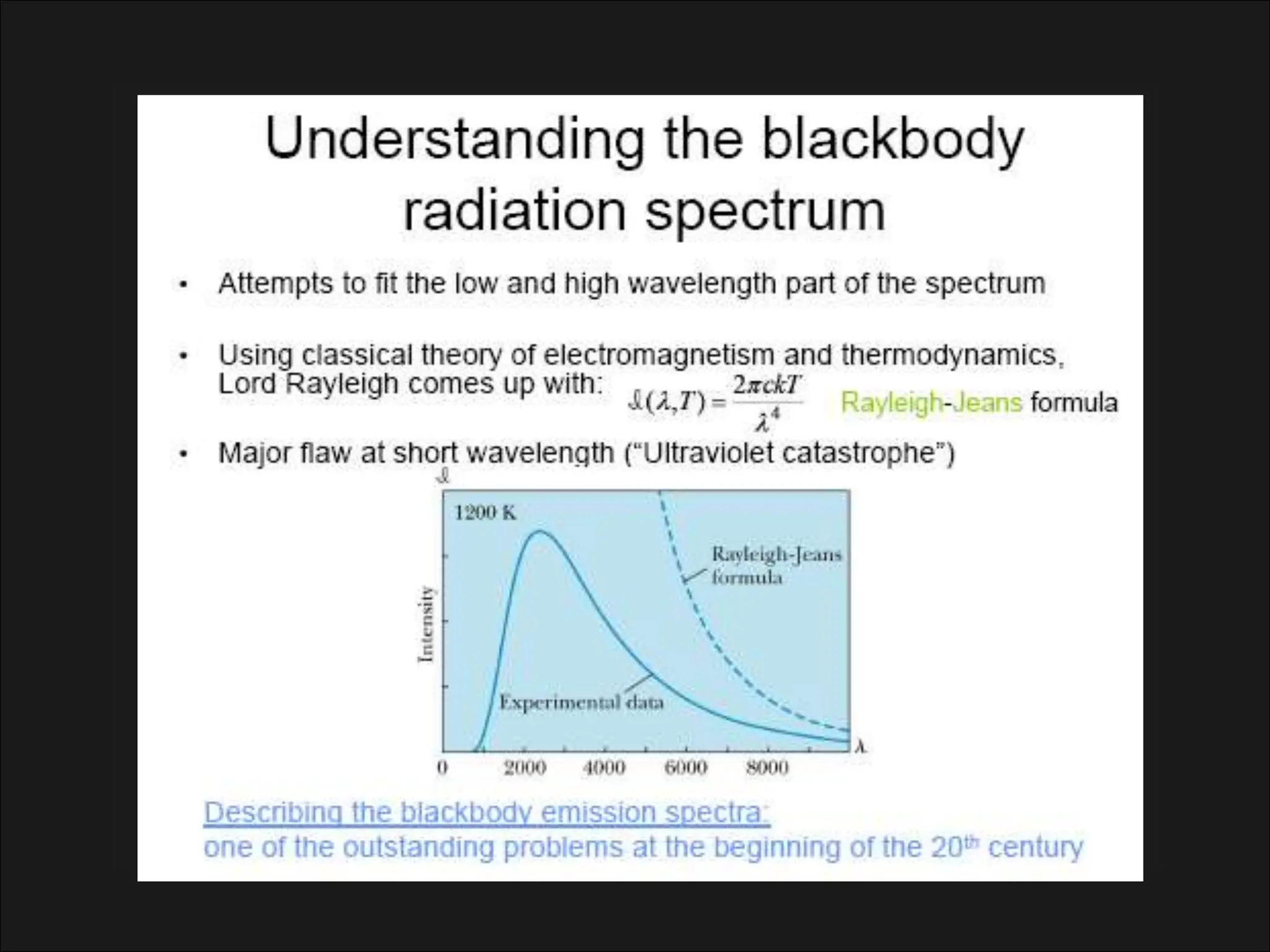
![Two Catastrophes?
• Classical physics:
– Emission spectrum: a superposition of electromagnetic waves of
different frequencies
– Frequencies allowed: standing waves inside the cavity
• Equipartition of the energy:
– Every standing wave carries kT of energy
– Flaw: when l → 0, the number of standing waves ↑, leading to E
→ ∞
• [Ultraviolet Catastrophe] Failure of classical theories:
– The work of Rayleigh-Jeans was considered as state-of-the-art,
using well tested theories, which were in very good agreement
with experimental results in many other circumstances.
– Need for a new theory…](https://image.slidesharecdn.com/basicsofqmpostulates-240324180034-bf1ce537/75/Basics-of-Quantum-Mechanics-Why-Quantum-Physics-17-2048.jpg)
